|
Just a source of light projected through one lens set toward the blank screen is enough. Along the way, the light passes through a glass plate, bright as a multi-faceted jewel, painted with scenes of daily life, funny or dramatic imagery of a dull daily routine transfigured in a illuminated shape. Alternatively, fantastic scenes of shipwrecks, ghosts, the hell itself full of demons and damned designed in the most gaudy colors possible, in its most aberrant forms. The magic lantern show, available today only through recreations in certain artistic performances or evoked in the narratives of authors like Balzac, in the Swedenborg's visionary theological philosophy and in the patient conceptual reconstruction carried out by historians as Laurent Mannoni, was the imaginary basis of these narratives, glass plates molded from the life and work of unique authors on the fringes of the usual canonization processes that make the Culture something predictable and perhaps unfair.
Such nightly shows were translated into book form by the patient editorial work of Dan Ghetu and by careful revision of the original material by the extraordinary Damian Murphy. In its final form, this show of lights and shadows became something else, a spellbook as imaginary as the phantasmagoria catalog used by Christiaan Huygens to impress some impertinent friends with his latest invention, the magic lantern. With the difference that Lanterns of the Old Night is real. The photos below were kindly provided by Dan Ghetu. The book starts delivered tomorrow, June 7, 2016.
3 Comments
There is a vertiginous moment that can occur daily or at least once in the life of each one, when we realize that everything around us is hollow, empty, and the life is nothing but a dream. This formulation is of course a cliché – true, but still a cliché. Maybe better reformulates it: our time is motionless. Like the arrow in one of the Zeno of Elea paradox of motion, we live in the perpetual stasis, the permanent immobility. Our gadgets, wars, refugees and everyday problems are only a foam briefly visible in the troubled sea. Thus we still live the time of the artistic avant-gardes. We are driven by the same contradictions, move us the same dramas, and our scandals are ignited by the same épater la bourgeoisie techniques. Perhaps this facts happens because the artists of the early twentieth century avant-garde discovered the secrets about a new narrative and theatrical genre: the universal tragedy – or perhaps, the universal comedy, because the two genres flow in parallel in this new form. The production of this unprecedented genre was unique: a drama, immense and uninterrupted, whose central theme is the annihilation of art.
In this new kind of Gesamtkunstwerk unveiled by the avant-gardists, the audience on a global scale is invited to take part in an act in which the artists and their creations are crushed by numerous repressive forces, but still seek desperately to remain alive and conscious, despite all the violence and the temptations that include some souls sales off. The portraits, paintings, images, stories and tragedies vanguards of the twentieth century Avant Gard sucks the audience to the inside of a kind of play without stage, the maelstrom of other and apparently remote era; when we look at a painting like Umberto Boccioni's La città che sale (The City Rises), made in 1910, we have exactly that feeling, even if we ignore its creator or the central theme of the composition. The dynamic forms of men and horses in Boccioni image takes the viewer to a kind of abyss, another time, or better yet, another time possibility, in which the dramatic tension is permanent. So the righteous concerns of our time disappear before the uncertainties of the Bolshevik Revolution, the stylized barbarity of fascism, the terrible hyperinflation everyday, the civil, European and World wars. If we were to christen this genre of a unique work, premiered in the early twentieth century and still pulsating, we could use a synthetic and effective term: perhaps Conflagration, not coincidentally, this is the title of the D. P. Watt new work, published by Ex Occidente Press Bucharest through its new editorial persona, the Mount Abraxas series. The Watt's new book has a curious format: quadrangular, something that the editor had already employed in L'homme recent series but in a bigger format. The jacket has a continuous illustration (made by Misanthropic Art) as a poster, the image of a black sun at the center, mediating between a hand and eyes of immense and divine proportions in the polar sides, the two fields marked by the presence of human ornamental forms. Given this extraordinary jacket, the minimalist cover, as a default by the publisher, provides an effective counterpoint with his animal fur texture, its low relief and its orange color (the same for the page marker). As soon as we started reading the book (after extraordinary photograph that serves as frontispiece to the book, "Multiple self-portrait in mirrors" by Stanisław Ignacy Witkiewicz) we are surprised by a brochure that shows us the "Instructions for Reading". Such instructions begin as follows: "Please read this text in one sitting, commencing at precisely 7.30pm one evening." This procedure, to guide the hypothetical reader in a recommended reading method according to the author, was used with similar purposes by Julio Cortázar in his experimental novel Rayuela (Hopscotch, in the most recent translation); as in the case of Cortázar, Watt invites us to disobey the rules established by himself, which incidentally we did just like Des Lewis in his excellent review of Conflagration (which can be read here). Soon after that first moment of estrangement, a Dramatis Personae as in a play appears. In this list, there are the names of the various avant-garde innovative theater creators in the twentieth century, from Alfred Jarry to Jean Genet, Bertolt Brecht to Eugene Ionesco, Vsevolod Meyerhold to Samuel Beckett. But the brief texts of the book does not follow the traditional structure of a play adapted to a book format. Brief and fluid narratives, this vignettes are marked by a date and a topographical title, time and an indication of place as "The streets of Trieste" or "Galerie Montaigne, Paris". These small narratives establish themselves on the balance between the abstract, the fantastic, the comic and the tragic. In this sense, the subtitle is revealing: "immoral vignettes", short scenes that could be staged as imaginative and critical (or ironic) commentaries about the contemporary (and historical) drama. Thus Beckett's universe resurfaces in the French countryside devastated by war. Ionesco's La cantatrice chauve materializes as false just in the time of its conception. The tragedy of Meyerhold unfolds clearly before the reader, to its inevitable end decreed by Stalinist orthodoxy. But these are only a few fragments, some of these voracious vignettes that seem to summarize all contemporary history beginning in Braunau am Inn, the April 20, 1899. In one of these vignettes, "Sprovieri Gallery, Rome", we have a vivid and dynamic description of the Italian Futurist theater. Suddenly, we are told that the images used as background to these presentations, representations of the mechanical vehicles speed and strength based on Neapolitan carnival, "were nothing but the force of speed and the energy of vehicles, the surging of movement and the violence of colour. They depicted only the passion of their own inception." Perhaps, this is the best way to describe this little masterpiece, a description that also fit to characterize the intents and unstable utopias, fragile, decadent and useless contraptions produced by the perpetually fascinating art of the avant garde in the twentieth century – a mist, a stream and a ghost, whose intensity dazzles and impresses all the witnesses by its own infinite driving force. The first three photos below were kindly provided by the publisher, Dan Ghetu. 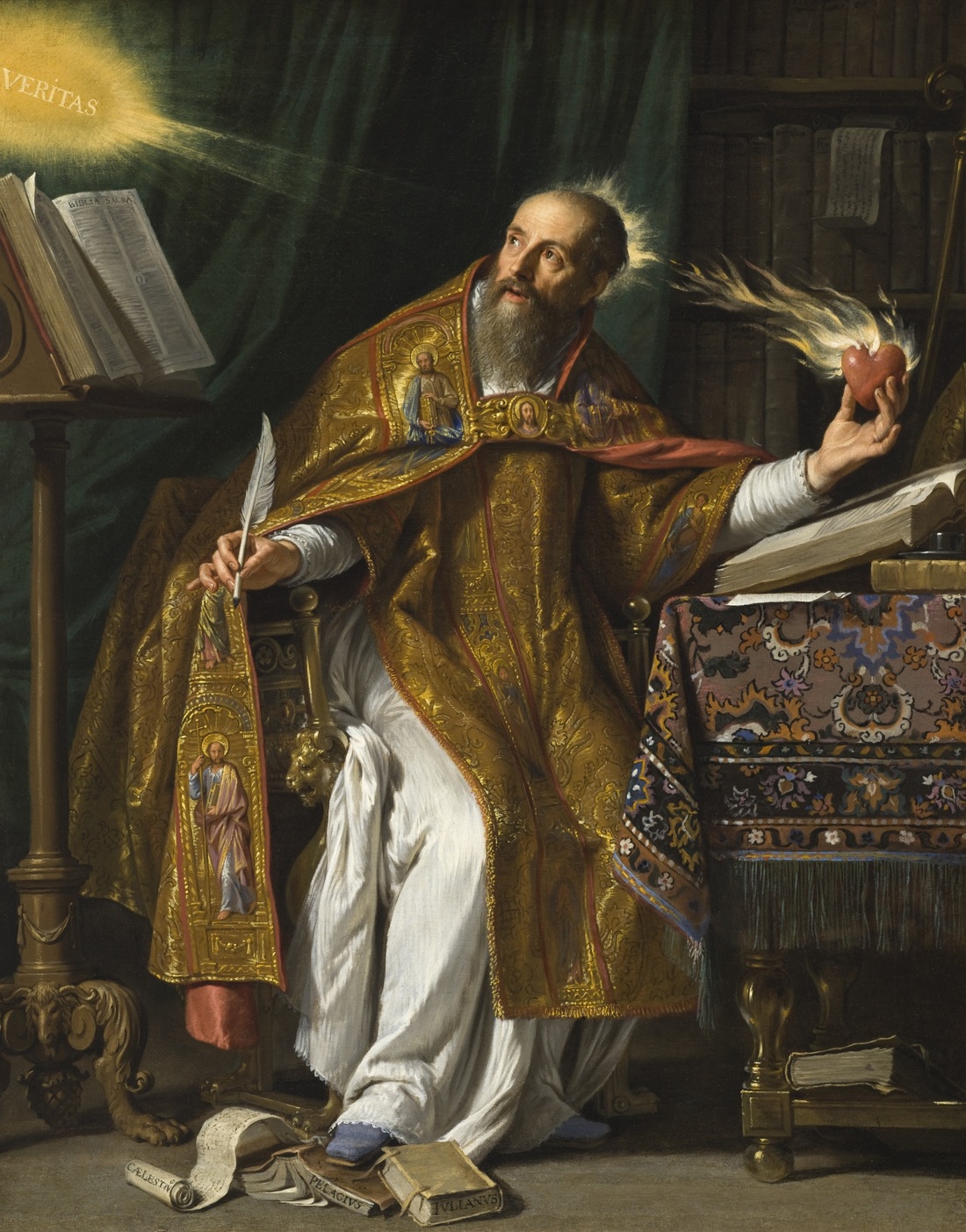 I sit down before a book: the jacket is entirely black, slightly glossy. I can hardly distinguish his name on the spine or the front of the jacket but it is possible to read the title, A Distillate of Heresy, written by Damian Murphy. The only image at the jacket, besides the tiny publishing house logo on the spine, is a small illustration of an angel sitting on Saturn; the predominant color, again, is black, now mixed to a pale golden, a necessary hue to build the volume illusion in the image. I pull out the jacket to contemplate the book in its nakedness: the cover, made of fabric, is also black, unadorned and without indication of any kind whatsoever. This dark predominance makes the reader's head go round: would be before a Grimoire, a clandestine book? A printed material that was, somehow forbidden or at least profane, demonic? The content would be near the blackness that dominates the external surface of the book? But here we come to the guard of the book: the black finally gives way to red shades in profusion, an abstract marbled effect, deeply significant because alludes to ancient books, lost in libraries and secondhand bookshops. So we are facing a more complex sense of purpose which only the outside design organization of a book: the blackness of the cover and dust jacket gives way to bright red tones of the guard in a kind of sequence, intense and dull colors in a contradictory shadow play, though potentially complementary in a ceremonial sense. For this book deals with ceremonies in so many aspects. But it is too early to discuss its contents. Soon after the guard, a stylized, almost typographic image – the salamander (a creation by Sorina Vazelina) in the form of an "S, a minimalist figure that seems to reach, despite its simplicity, the formalization found in a letter or in some hieroglyphs. After all, this "S" guard the twisting sense of the fantastic animal (the salamander) and seems to communicate with the book's narratives, dealing with mistakes, coincidences and chance encounters that generate ceremonial and ritualistic effects. This calligraphic image seems to contrast with the typography of the title page and the elaborate subsequent image of a hand holding a heart on fire, cut in big closeup of a much larger and more complex pictorial composition; this is the Saint Augustine (1645-1650), a painting by the Baroque Philippe de Champaigne, reproduced above. In the image of Champaigne, the saint is in his study room, apparently enjoying a moment of enlightenment after intense intellectual work. The ecstatic eyes of the saint converge on the veritas shining like a small sun in the upper left corner as his hands holding a pen and a heart on fire by divine inspiration. Highlighting just the hand that holds the heart in flames, the Murphy's book graphic work displaces the intellectual saint imagery of its usual position; there is no veritas that illuminates everything, even the spatial location and the general background of the image, but only the bloody organ on fire, something spiritual and carnal, even cruel, but certainly ritualistic. As the narratives, these brief images place in the space of the book paratexts seems to indicate that the conventional ways hide many shortcuts and unknown routes far from salvation and enlightenment for anyone that discovers these kind of paths. There are brief texts, epigraphs that prepare the reader for the actual stories. In one of these epigraphs, we read that the book is intended "For the heretics, the few, the outlaws, those who turned to face the Moon rather the Sun." There are no images in the rest of the book, but they would be unnecessary: the form was established by this presentation that works an organic link between text, images, layout, design aesthetics and essence of the narrative. As written by the researcher Évanghélia Stead in another context: "Pictures and prints, folds, covers and bindings, ornaments, graphics and typography, even the ink and the letters, the insects that go through the desert of the paper and were endowed with an intellectual, poetic and sensual sense." Damian Murphy, in this sense, is a unique narrator to handle unusual elements in the white desert of the paper, turning it into a dense forest of signs: his stories have a ritualistic sense, a game between objects (everyday or not) and chance, each of this parts playing essential functions. His protagonists are unique characters, whose life follows its own meaning in contrast to the more mundane aspect of existence, priests or shamans seeking ritualistic events in every little chance of escape. And the editions released by the publishers Zagava and Ex Occident Press, complete the complex sense of these narratives moving the fluidity of the reality electrified by symbolic and mythical meanings. The first tale of the book, "The Book of Alabaster", is about a recluse who collects in his tower, unique objects like an old video game cartridge whose name is the title of the story. In the first sentence, a synthesis of the Murphy's aesthetic and narrative vision: "Stefan lived alone in the lookout tower." There is something timeless in this short sentence, whose center is the expression lookout tower, a type of military construction which generally refers to the primeval times, to the Middle Ages. This early disorientation of the reader possibly disappear in the flow of the plot, but never so as to realize a well-defined and clear universe and/or scenery. For Murphy narratives develop in an abstract plan, in which physical landmarks easily get lost and confused with psychic perception or mythic space in its roundness, infinity and ritualistic unfolding. The subsequent stories of A Distillate of Heresy develops in different directions this proposal of a physical universe which contains his double, difficult to define or perceive with the necessary clarity required by mimetic realism, culminating in "Permutations of the Citadel", a tale in which the fictional reality seems continually transmute around the characters. These are games and pursuits involving daily life opening new possibilities not only for the initiation rite, but also for sacrifice, with the view at the same time dark and desirable of endless territories under our cities, places where the evocation potential hellish seems relatively easy. The city is a theme dear to Murphy: a twilight and tentacular entity whose daytime and everyday appearance is just one of its many labyrinthine manifestations. Murphy's subsequent productions – actually the novel "The Salamander Angel", published in Infra Noir collection, preceded the tales of A Distillate of Heresy in a few months – as the novels The Imperishable Sacraments and "The Hour of Minotaur" (penultimate narrative the collection The Gift of Kos'mos Cometh!) had been exploring new ways in the infinite possibilities of ritualistic and ludic combination in terms of narrative. One of these ways – very well developed in the latest Murphy's novel, The Exaltation of Minotaur – is precisely the philosophical dialogue that unfolds in intricate structured combinations for the stories turning around symbolic elements that allow the first narrative chapters, "An Incident in the House of Destiny" to use titles that allude to archetypal forms: the bureaucrat, the anarchist, the vision, catastrophe. Even the division between different literary genre looks inappropriate in the narratives of The Exaltation of Minotaur, complex forms between the short story and the novel intertwine in obsessive detail, cyclical aspects endow the characters ritualized activities of meaning layers. Murphy, accordingly, performs multiple evocations every narrative; perhaps some of the evoked names can be recognized by the reader: Alain Robbe-Grillet and J. K. Huysmans, somehow. But this is only the surface: the nuances and consequences of Murphy's stories are situated in an opaque, indefinable and dangerous region we usually call imagination, a place that is not always easily accessible. Some of the photos below (the last three, from the books The Imperishable Sacraments and The Exaltation of Minotaur, respectively) were kindly provided by Dan Ghetu. Let us imagine that the universe of Culture and Art could be organized and structured like a vast museum with a strictly chronological and canonical point of view. This imaginary museum could be similar perhaps to the British Museum or the Louvre, with a central section in which we would have the great representatives of universal culture carefully cataloged to the delight of visitors. In the secondary, smaller sections, we would have less "relevant" or abstruse authors and traditions. In fact, this sideshow sectors is very important in the major museums to preserve the picturesque and exciting aspect of Culture – allows the visitors to feel the chance of discovery and the unexpected, transforming the museum into a sort of jungle ersatz for a kind of exploration – and in this secondary niches probably we would see the Romanian literature, the Brazilian literature, perhaps even the Guatemalan literature. Indeed, there is nothing excessive or wrong in designing an aesthetic theory on these principles, however, it is possible to reverse the perspective with what has been produced in margins, out of any central axis. Going even further, it is possible to reconstruct the lost and forgotten production, the work failed to materialize or vanished, for one reason or another. The marginal perspective and the rebuilding of what was lost/destroyed is an activity that goes beyond the ghetto of exoticism and removes the Art world of a brutal closing, provided for the canonical hierarchies establishment. This archeology of unconventional does not seek a new Homeric Troy, but the remains of the extinct and defeating: the sirens, Circe, the Cyclops. And one of the foremost of these imaginary archaeologists is, without a doubt, Andrew Condous, whose Golem of Bucharest has just been released by L'Homme Recent/Ex Occidente Press.
The “Golem of Bucharest” is Horia Bonciu (1893-1950), novelist, poet, journalist and translator, a Romanian with Jewish origin. He was an enigmatic figure in a rich cultural moment at Romania, which had been dominated by enigmatic figures. It is true that this period – the first four decades of the twentieth century – despite or because of that cultural wealth was also politically turbulent, finding the stability provided by fascist or communist tyranny. Tyrannies are suspicious about what can not easily be blacklisted and cataloged, which resulted in the marginalization of Bonciu or as well defined in the Condous words: "Bonciu can be counted amongst the Romanian avant-garde rebels of literature, a rebel against both form and content. Another outlaw.” Thus, nothing more appropriate to look for traces of what this outlaw may have planned, structured, written and even published, but that was lost in the misty and unstable world in which Bonciu lived. To define this dark material – revealed through letters, magazine ads, comments, memories – Condous uses the Greek expression Cryptadia, what must remain obscure, hidden. If Cryptadia indicates all that no longer come out of the shadows, this does not mean that the suggestive nature of this material can't contribute if not for a full recovery of the lost in the History (the annulment of Cryptadia condition), at least for a kind of brand new construction on fresh foundations. Archaeology is also a creative and poetic work, and that we understand while reading Golem of Bucharest, reconstruction of Bonciu’s four lost books. Each of these books – “Parada Elefantilor”, “Concert la contrabas”, “Sarpele cu ochelari” and “O carte incomoda”, the latter having a title which curiously resembles the great prose work by Portuguese writer Fernando Pessoa, The Book of Disquiet, published only in 1982 – allows Condous a chance of fictional extrapolation of documentary limits settled by his Historical research. This extrapolation is between what Bonciu could have produced and what Condous indeed produces – the archaeologist abandons its scientific synthesis process and embodies the spiritualist medium or rather the shaman, which simultaneously evokes the lost work and builds his original creation. What emerge from the halfway point between archeology and shamanism are, in turn, astonishing incursions into absurdist prose, expressionist poetry, strange fiction and existentialist lucubrations. Condous creations moves between the many archetypes and literary myths, facilitating the location of Bonciu ideas in a historically broader picture. In "Parada Elefantilor" (The Elephant Parade), we have a parade of elephants, fantastic animals traveling through the medieval bestiary and the anticipation of the Rhinocéros (1955) a famous play by another Romanian, Eugène Ionesco. In "Concert la contrabas" (Concert Bass Viol), the poetic constructions follow the original Bonciu lost book proposal for a dialogue between poetry and the music produced by four composers (Gustav Mahler, Alexander Glazunov, Igor Stravinsky and Schoenberg). The expressionist musicality recreated by Condous is in the foreground in this chapter. Jumping to the third and longest chapter, "Sarpele cu ochelari" (The Cobra), a small but brilliant pearl in the Weird Fiction panorama, dialoguing with The Golem by Gustav Meyrink but even surpasses this reference with a highly original and unique monster. The final chapter takes over “O carte incomoda” (The Book of Discomfort ), a book with a target: to induce, as the title indicates, some unease feelings in the reader. For this purpose, Condous chooses the aphorism that summarizes the cosmic despair: “I taste this fast smooth darkness rolling over my tongue, nauseant flavours of emptiness, the taste of lost echoes, fossils of echoes, licking the secret lustre of blackened mirrors, the back of mirrors, the dry saltless dew of the abyss, effluvium of dead gods.” If the task of Golem of Bucharest may seem conventional at first glance, its execution is unique in each of its instances. What comes after the reading of Condous book is not only the portrait of a forgotten author, downtrodden by History, but the panel of a time when the spheres of creation and destruction swirled with equal speed and intensity. The book's design, in turn, is exquisite in every detail, as usual in the case of L'Homme Recent or other editorial adventure by Ex Occidente Press. Every one of these details, in turn, provides meanings that intersect with those raised by the book’s contents. From the jacket, which features only a cubist image and the author's initials to the black and furry cover that has a central illustration of a man pissing on a swastika. From the book format, a perfect square to the carefully chosen internal images, a small editorial gem, a book of hours for collectors, connoisseurs and other lovers of the book as an object. Nothing more suitable for Andrew Condous and his Golem of Bucharest, strange and unique blend of essay and fiction, recovery and reconstruction, historical review and narrative extrapolation. This review was accomplished with support from PNAP-R program, at the Fundação Biblioteca Nacional (FBN). In the siege to the city of Tyre, facing fierce resistance, Alexander the Great had a dream with a satyr dancing furiously. The Alexander official oneirocritique, Aristander conducted a astute reading of the dream, saying that the satyr was not a symbol or an image but a phrase: “sa Tyros”, Tyre is yours. The interpretation nears the dream field and transforms the oneiric activity, surpassing the mere image of vague symbolism. The old dream of Alexander and it’s translation by Aristander could have come from any of the Thomas Strømsholt tales, an extraordinary player, performer, creator and replicator of dreams. His books, O Altitudo, “Inflammable Materials” (from the collection Infra Noir) and Splinters of Horn and Ivory have a curious resonance between the beauty of editorial solutions and the wonder of narrative constructions. The brief narratives of this books – close to the Baudelaire petits poèmes en prose and the surrealists récits, but far away because the unique formal and narrative approach by Strømsholt – changes before our eyes full with astonishment, as the everyday dream that goes beyond the hours of sleep and remains vivid in our consciousness.
Most of the pieces were fashioned from entries in my dream journal, recordings of dreams that only needed a little polishing to make them enjoyable (I hope), while others were the daydreamy germinations of whatever came to my mind at the moment of writing, hence the shifts in tone, style and content. But I did work toward a unifying theme for the book, that theme being, as you so correctly identify it, metamorphosis of some kind or other. We tend to view the world as made up of hard and clearly delineated objects and ourselves as solid bodies with fixed identities. A whole other way of viewing existence is presented in the Metamorphoses, a poem that I love very much and keep returning to. Not only does Ovid tell of “bodies changed to various forms” but the poem itself has a transformative power: in the end the poet is made immortal, transmuted. I believe that art – which is always a transformation of nothing into something or of something into something else – has the power to effect and change reality. “Coccinella” may be read as the possibility of transcending such notions as identity, gender and, ultimately, the human condition.
In the “The Wandering Thesauri,” which owes something to the universal libraries of Kurd Laßwitz and Borges (among others), there’s an allusion to Dada and their sane revolt in an absurd and ruined world run by lawful thieves and mass murderers. It’s in the nature of art to transgress in one way or another. Some books are cloaked criminals intent on knifing, subverting and perverting our hegemonies, categories and preconceptions; this, it seems to me, is a very noble endeavour. Even the most innocent looking books may contain some form of transgression even if it is only to engage the reader in an imaginary world for a brief period of time, a sort of temporary lapse of sanity. In my “commonplace book” there are many quotations extracted from Machen’s immensely diverse works. One quotation, pertinent to your question, reads: “For literature, as I see it, is the art of describing the indescribable; the art of exhibiting symbols which may hint at the ineffable mysteries behind them; the art of the veil, which reveals what it conceals.” Machen’s style is one of great clarity and measured obscurity. As we’ve all experienced, twilight and darkness activate the senses wonderfully; by leaving hints and suggestions the writer encourages the reader to fill in blank spaces, to populate the shadows and to slip through the cracks.
In the case of Inflammable Materials, if I remember correctly, Dan Ghetu had specifically asked for very short prose pieces. I’d made a few attempts in that style before, and although not quite successful, it was enjoyable. Picture, if you will, a masticating cow and you’ve got a good illustration of how I usually approach a short story, writing draft upon draft, endlessly revising, etc. But as I said above, the vignettes are mostly impromptu pieces even if it’ll take hours, a whole day maybe, before a particular vignette is finished. Perhaps the almost frivolous spontaneity of their conception loosens the constraints of my usual conventional manner, the style shaping the content. That aside, I love brief narratives and prose poems. The latter, Huysmans tells us, is Des Esseintes’ favourite form of literature because it should ”contain within its small compass and in concentrated form the substance of a novel, while dispensing with the latter’s long-winded analyses and superfluous descriptions”. Huysmans, no stranger to luscious verbosity, may be having fun at his own expense here. It is often in the ”long-winded analyses and superfluous descriptions” that the novel really comes to life; cut it away and you’re left with an empty house, a barren protestant church rather than a gorgeous cathedral. Certainly, there is no need to weigh the novel against the prose poem in order to appreciate the latter. A short piece may evoke or suggest a greatness that belies its scant length just like an impressionistic piano piece may linger in our minds as long as a symphony, albeit in a more vague fashion. Of the pieces in Inflammable Materials and Splinters only a few approach the prose poem in style or tone. The operative word here being “approach,” for writing poetry is far beyond whatever literary skills I may have. I prefer calling these prose pieces vignettes which is just a fancy name for prose below 1000-1500 words. That said, the prose poem and the vignette might share the same objectives: to capture or exteriorise a flash of illumination, compress a dream to its essentials, convey a joke or anecdote, etc. The very briefness of the vignette is an attraction too. I might be dead tomorrow but at least there’s a chance that I’ll be able to complete a vignette before day’s end (or so I tell myself). Although this kind of reasoning is quite absurd (followed to its logical conclusion one ought to refrain from initiating any action whatsoever), it is a comforting thought both as a writer and as a reader. To leave things unfinished is as deplorable a prospect as it is probably unavoidable.
I’m delighted that “The Legend of Melancholic Prince” should evoke a marriage between Wilde and Baudelaire; I never thought of it that way but there’s certainly a whiff of decadence about it (and “The Glowing Heart” as well). The pop music references are far more explicit. Bowie’s music, which has been in my ears since I was about 10 years old, is a continual influence on my writing; a single line of his can conjure up whole new ideas and visions. As for Leonard Cohen, he just appeared in my dreams three nights in a row; in each dream he delivered an aphorism or bon mot (spoken in his wonderful smoky voice). But I’m evading your question for the simple fact that I do not know how to answer it. I suppose that some references just occur as a natural element in the fabric of the story, while others are carefully weaved into the story in order to pay tribute, acknowledge an influence, or to suggest possible readings to the reader.
“No bridge exists between the transcendental world and nature’s reality,” as Bruno Schulz so succinctly put it. Schultz, in fact, is one of the most accomplished oneiric authors I can think of. In his stories the common Platonic-Cartesian dualism dissolves: reality is transmuted, made phantasmagorical, made real. I cannot claim Schulz as an influence though, only as a model. To speak of influences is always a dubious matter. My perception of dreams is most likely a hodgepodge of philosophers and authors, some popular, some odd, and, dating back years, some forgotten. Dreams seeping into waking, blurring or corroding the apparent boundaries between the two states are certainly a motif frequently met in literature. Good stories share with dreams the quality of being perceived or experienced as truer than what occurs in what is usually denominated “reality.”
When or if the right idea for a more extensive or substantial story presents itself, I’d probably follow its scents like a lovesick dog even though the transubstantiation of idea into words is too often an extremely frustrating process that ends in failure and despair. My one and only ambition is to write a good story – just one – and the length of that story doesn’t really matter. Interview conducted with support from PNAP-R program, at the Fundação Biblioteca Nacional (FBN). In a recent past, a very large History of the World seemed a good idea: authors like HG Wells sought audacious narrative synthesis of the multilayered historical process. The efforts were elegant or eventually reductionist in the task of extracting a logic in the History, a process that has certain essential disorder, as said Jean-Paul Sartre. In fact, a possible criticism about universal stories, perhaps the most striking critic, is precisely the approach of historical fact, because the universal historian appreciates the wonder facts and great names in a seemingly continuous line of progress. However, there is another History, populated by people and events unjustly ignored, remote or marginalized. This historical otherness, that is often not even known, emerges in a unique form in the works of John Howard. The marvelous fiction of Howard addresses fantastical phenomena and philosophical questions in the edges of our history and cognitive universe – sometimes in totally imaginary regions, as is the case of his most significant topographical creation, Steaua de Munte, a exhilarating region of imaginary Romania that can be visited in his latest novel, The Lustre of Time. Even the supernatural in Howard creations is subtle one, almost imperceptible – the uncertainty is the poetic weapon of John Howard in his antithesis of universal history, an imaginary history, unique and terrible.
A very particular approach to urban topology, including the development of an entirely fictional town, Steaua de Munte, emerges in your works. This imaginary city is extraordinary, an entity that continuously develops itself over several short stories and novels, with its cafes, hotels, universities, hills, houses, buildings. It's an imaginary space equally or more extraordinary that William Faulkner's Yoknapatawpha County or Arkham by H. P. Lovecraft. So what would be the point of creating a fictional territory in such a distant place, covered in a peculiar picturesque mythology, Romania? What have been your sources and conceptual and imagery sources for the construction of Steaua de Munte? Modern Romanian history has interested me ever since I came across a contemporary account in John Gunther’s Inside Europe (1936, and subsequently much revised and reprinted). This was when I was still just a teenager and there seemed no reason for Communist rule behind the ‘Iron Curtain’ not to last for ever. I found Gunther’s portrait of the country as it had been nearly fifty years before my time to be utterly fascinating. Romanian politics were byzantine, Ruritanian, and murderous. And the country’s leaders – especially the flamboyant king, Carol II – seemed larger than life. John Gunther was an American newspaper reporter, a foreign correspondent in Europe for many years before and after World War II. He became one of those authors whose books I always look for. I have a shelf of them. I never forgot Gunther’s vivid and accurate summaries, and when Ceausescu and the other Communist leaders fell, it came as no great surprise to find their countries carrying on, in many ways, from where they had left off in the 1940s. There is so much in the histories of that part of Europe which seems almost operatic or something out of a television drama – if it had not been real, it could only be believed as fiction. But that is easy for an outsider such as me to say: these people were also responsible for ruining the lives of so many of their people. Fiction can examine the dark places – and should do. The opportunity to visit Romania came in 2009. The previous year Dan Ghetu’s Ex Occidente Press of Bucharest had published The Rite of Trebizond and Other Tales, a collection of stories mostly written in collaboration with Mark Valentine. Dan had read “The White Solander” – one of the tales of The Connoisseur that Mark and I had written together, and which had a Romanian background. Then Dan invited Mark and Jo Valentine and me to visit Romania. Dan and his wife were generous and painstaking hosts, driving us around much of the country in an exhilarating tour which nevertheless ended all too quickly and still left too many wonderful places unvisited. We crossed the mountains into Transylvania and stayed in the old cities of Sibiu and Sighisoara, and these were the main sources for my city of Steaua de Munte. But in most respects Steaua de Munte is a unique and special place, not dependent on anywhere else, and is what I, as sole proprietor, choose to make it – and remake it. Novels and series of stories set against a common background have always appealed to me, especially when the setting develops and changes, with various different aspects being revealed at various times, and yet which also leaves much to the reader’s imagination. Characters come and go (and families and relationships are vital) but the background scene, even when it changes, does provide a level of continuity against which new stories unfold and have consequences for the unwritten future. The protagonist of "The Fatal Vision" (the longest narrative of the book Cities and Thrones and Powers) and The Lustre of Time, Dr. Cristian Luca, embodies something of the archetypal figure: the modernist architect/urban planner acting as a demiurge, fighting world authoritarian and vulgar perceptions. This archetype has its own history, dense and multiform, and came even to the cinema through The Fountainhead, Ayn Rand's novel, adaptation directed by King Vidor in 1949. Luca was your personal view of this archetypal figure? What about the development of such character? Now I have to confess that I’ve never read The Fountainhead, nor seen the film – I must try and do so! Luca first appeared as something of a background character (although a pivotal one) in The Defeat of Grief, and I never planned on him appearing again. But he did! I never attempted to train as an architect – I wouldn’t have stood a chance – but I can’t remember a time when I wasn’t interested in buildings and their creators (this also includes structures and engineering such as bridges and tunnels). As a teenager I found books on modern architecture, and was captivated by the architects’ visions. It was even more inspiring because they were being built: Brasilia, for example. Of course, there have been all sorts of problems and unintended consequences – but I have to respect, if not love, the soaring visions. I imagine Luca to have come alive to a vision of the future when he was a very young man. However, he had the intellectual ability to make something of himself, and also the social and political skills to navigate his way through minefields of academia and patronage. I do not intend Luca to be a ‘good’ man – in fact at times he has been a total bastard! But he does what he does in order to survive and remain true to his vision. This comes at a cost to himself and to those close to him. The highest success is only one step back from ruin and defeat. Hopefully Luca will return at some point. That man is a born survivor – he learns from experience! And he’s a genius. But as a human being he’s flawed, and certainly damaged. Some stories seem to generate characters who must work in the background, who influence and fix events, who wield power over others, but remain behind the scenes and in the shadows. They are the people who have to do things for other people because the other people can’t be seen to be involved. On the level of fiction I like these sorts of characters, and the ‘secret history’ of their worlds. They are not ‘nice’ or ‘good’ people – but they are as they are for a reason, just as people who take risks, hurt others, and cause damage have often themselves been hurt and damaged, somehow. Well-adjusted and contented people don’t make very interesting characters. In your narratives, the architecture (as a style, a form, a concept) becomes a exquisite element, not only related to the concrete spaces but also to the sensuous perception and physics of cities and their buildings, crossing the skin and bones in characters like Dr. Cristian Luca, mentioned in the previous question. Incidentally, there is in the novel The Lustre of Time a memorable passage, in which Luca declares his desire to dissolve himself, merging his atoms with the walls around. Where you located the origin of this personal and unique architectural approaching used in your stories? As I said, I came across modern architecture in books. But there was also the country I was growing up in. It was being built, or was still new. I’m too young to remember Harold Wilson’s 1963 speech in which – according to the internet – he said ‘In all our plans for the future, we are re-defining and we are re-stating our Socialism in terms of the scientific revolution. But that revolution cannot become a reality unless we are prepared to make far-reaching changes in economic and social attitudes which permeate our whole system of society. The Britain that is going to be forged in the white heat of this revolution will be no place for restrictive practices or for outdated methods on either side of industry.’ But I grew up in a country in which to some extent Wilson’s vision did get the chance to be worked out. The future was going to be brighter, cleaner, safer. Slums were being demolished and new housing built. In some places the ruins caused by World War II were finally being swept away – in London there was the Barbican scheme and Route XI. Sleek motorways crossed the country. Jet airliners like vast metal birds flew overhead, and I watched the Apollo missions on TV. Now we know that new solutions give rise to new problems, but to this child it seemed that only challenge and wonder was in store. I read comics and watched films and programmes on television which showed the marvellous buildings and world of the future, and I thought that one day I should see them and live in that world. Sometimes I feel that the bright future has been stolen, so perhaps I try to compensate for that loss in some of my stories. I consider specially outstanding your short-story “Twilight of the Airships”, a narrative based in a singular speculative concept whose climax, the “invisible battle” between the Soviet and Nazi airships, brought to my mind both the novel also populated with airships The War in the Air, by H. G. Wells and also certain Jorge Luis Borges tales as “El milagro secreto”. Why this approach to the airships as the plot defining form, in this particular case? However, your approach to the airship technology, far from conventional steampunk views, would be closer to scientific novels of H. G. Wells, Charles Hinton or J. H. Rosny? My interest in airships comes from childhood. Like most boys I was interested in mechanics and machines – the bigger the better. I had a Meccano set and lots of Lego bricks. I was never much interested in cars or trains (even steam trains) but I loved ships, aircraft, and rockets. I used to know how the various types of engine worked, how to recognise the different jet airliners and World War II planes, all that sort of thing. Sometimes our father used to bring home books for us that he’d bought, and on one occasion he gave me a book about airships – from balloons to the World War I Zeppelins to the great airships of the 1930s and the era that ended with the Hindenburg disaster. There were lots of pictures. (I wish I had that book now, but I must’ve given it away or lost it.) The thought of these majestic craft the size of ocean liners plying the skies in commerce and exploration still fascinates me. I’ve loved Wells’ work since first reading The Time Machine when I was ten or so. I only read The War in the Air fifteen years or so ago, and I expect it was in the back of my mind when I wrote “Twilight of the Airships”. There were also the real-life accounts by the crews of the German Zeppelin bombers and the British fighter pilots trying to shoot them down. My grandmother saw a Zeppelin shot down in flames over north London, and she had a postcard showing the smashed metal framework on the ground. Another confession – I don’t know Borges’ story at all. Another situation I should remedy. I am really not at all well-read! I realized a recurring interest (even obsessive, maybe) through your stories on maps and in the definition of borders. The greatest example of this interest is the novel “The Unfolding Map”, included in the Infra Noir collection, centered on the strange mystique of the borders redesign and reconfiguration, an operation that jump from paper to reality. Such interest would derive from European history? Or is a kind of experiment with the power of idea contrasted with the restrictions of material/political reality? Yes, I think my interest in boundaries and their changeability comes from being interested in European history, although my interest in European history probably only started getting serious after I’d discovered the concept that countries’ borders were not as stable as I might’ve thought. When I was thirteen or so I was bored during a school holiday. There wasn’t much to do where I grew up. I went to the town’s library, and then into the reference library, and for some reason took a historical atlas from the shelf. I remember taking it over to a table and sitting down – and then being plunged into a world of shifting frontiers, with empires rising and falling in tides of different colours washing across the pages as I turned them. I must’ve realised that this charted the passing of decades and centuries. Names that had persisted through the centuries would suddenly vanish and be replaced by new ones. It all illustrated to me from an early age that nothing lasts for ever. And of course I quickly found out that the European frontiers I saw in my parents’ atlas at home were extremely recent. If borders have changed in the past, they could do so in the future – and many in Europe did eventually undergo thorough change in the early 1990s. And it all happened surprisingly peacefully except for the terrible, unnecessary, break-up of Yugoslavia. I suppose the power of idea lies behind many such changes: nationalism and the desire of a certain group and/or its leaders to enforce views of itself based along ethnic, cultural, religious lines, for example. Changes of border are one of the outward signs of something else – and that is what can be fascinating to make fiction out of. Times of war and economic turmoil have often been accompanied (or followed) by great creativity, and ordinary people showing what is best in humanity. Of course, creativity can also be stifled from above during such times, and people show the worst aspects of human nature. But I think treating these sorts of themes in fiction, and including real events and people from history can allow new insights to be born from the new stories. Or we can be reminded about things we ought not to forget. Behind border changes, behind the reality of changing the names of cities and streets, behind banning a book or smashing an artefact, there is also the reality of human cost, human loss, human pain. And yet there can still be humour, the bearing and sharing of burdens, the creativity. It seems to me that most people will always try to defy and overcome restrictions, however that might be in their different situations. Fiction can show that. The uncanny or weird effect in your narratives is quite subtle, with a hard philosophical investment. The strangeness in your stories is a gradual aspect, unveiled momentarily and covered again – an effect achieved by the clever use of continuity fragmentation and changes of views in the plot. Tell me about the process of creating this conceptual strangeness/uncanny/weird which I believe should not be enjoyed by certain fans of hardcore supernatural horror. I don’t think I’m aware of any conscious process – it just happens (or fails to happen)! I write very much by instinct, and quite often begin a story with no real idea of how it will end. I find that the process of writing a story tends to generate what then gets included, more so than any notes and outlines I might prepare first. What I do know is that I like subtlety rather than ‘blood and guts’ – although there is a place for that in supernatural horror fiction. Whether it’s always accurate or not, I prefer to think in terms of the ‘numinous’ rather than the ‘supernatural’ – although when it comes down to it I don’t really mind what labels get added! One of the essential aspects of your narratives – even before any editorial treatment – is the elaborated imagery, sometimes evolving for a visionary formulation. It would be extraordinary to see some of your stories, such as “Out to Sea” and “The Waltz of Masks”, in movies and on television. What is your connection with the aesthetics and cinematic thought? Do you have any future projects for cinema or television? I do tend to think in pictures, and I think that’s one of the reasons I often begin a story with uncertainty as to how it will end. Or sometimes it’s the end or climax of the story (not always the same thing!) that occurs to me first, and it occurs in visual terms. Then I make a note of it and then try to work out a story which can include it. “The Waltz of Masks” was inspired in part by the great set-piece ballroom and party scenes in one of my favourite films, Oberst Redl (directed by István Szabó). These are gorgeous and magnificent, feasts for the eyes (as well as the mind – as the entire film is). I don’t seem to watch as many films as I once did, but the ones I really like I’ve seen so many times and still watch again and again that I feel I know them well – although they can still throw up surprises, which I like! No, I don’t have any plans for cinema or television projects, and they’re not things I’ve ever considered doing myself. But I would certainly be open to anyone who wishes to adapt or collaborate… Interview conducted with support from PNAP-R program, at the Fundação Biblioteca Nacional (FBN). Below, some works by John Howard: Written By Daylight, Secret Europe, Cities and Thrones and Powers, "Unfolding Map" (in the collection Infra Noir), The Lustre of Time. Jorge Luis Borges, in an extremely rich and suggestive essay entitled "Narrative Art and Magic" – compiled in the anthology Discusión (1932) – discusses the art of narrative was located close to the magic through the common procedures like analogies, unusual projections, the imaginative overcoming of the insoluble contradictions. A large arsenal employed for a simple goal: the transmutation of our usual reality and its strange causality in a new, complex reading. Damian Murphy, with his fiction, recovers this Borgean statements with new developments related to the games, the wandering, the initiation. In the novel The Salamander Angel (published in the collection Infra Noir), in the stories compilation A Distillate of Heresy and in his participation in the Fernando Pessoa homage, Dreams of Ourselves, Damian Murphy has set visionary relationships between magic and fiction.
In your narratives, there is a very evocative fusion between displacement (wandering) and mapping (the conquest) of real and imaginary territories, the transiting sphere for your characters. The transitions between real and imaginary topography are subtle and complex, so that your narratives get a enigmatic complexion, related to the initiation rites. An extraordinary example of this call to wandering arises in the story "The Book of Alabaster", in which exploratory and initiation wandering happens within a virtual video-game universe. What would it be the origin of your perception of wandering? How do you set this paradoxical relationship between the free travel and the need for a map? I’ve long been fascinated with the very human tendency to spatialize experience. Dreams, visionary experiences, initiations, video games, and narrative itself all demonstrate different ways in which we do this. Different cultural approaches to the mysteries use spatial metaphors such as the cube (along with other geometrical forms), the temple, and the city, to illustrate states, ideas, and relationships which are too abstract to represent directly. It seems natural to me to draw parallels between the abstract maps found in Kabbalistic works and esoteric Islam, for example, and representations of geographical constructs found in video games designed for older systems. To this day, I’m compelled by maps of old video game areas (you can find these all over the internet) in the same way that I’m compelled by depictions of New Jerusalem or the geography of Tartarus. The initiatory experience relies on the dichotomy between mapped experience and free travel, as you’ve termed it. On the one hand, a ceremonial initiation conveys the initiate along a route defined by symbolic values. Geometrical formations might be traced along a temple floor, for instance, with confrontations at various localities which represent the elemental forces of nature, or the stations of the sun and moon, or the phases of an alchemical operation. On the other hand, the initiatory process almost always involves an entry into unfamiliar territory, a period of searching for something of worth which is hidden, forcing the candidate to adapt to an environment in which they have no previous experience. Often, in my writing, I’ll begin with a particular structure which is concealed from the reader. The story will then be constructed as a sort of initiation of one or more characters into the mystery which is at the heart of that structure. In this way, the reader is made to wander through an environment for which there exists a map, but that map has largely been withheld from them. I put a lot of emphasis on intuition and sensation - the numinous speaks far better through these aspects of experience than it does through the purely rational. Maps of the intangible are something which I’ve always been attracted to. History is littered with maps of visionary worlds - from Dante to Blake to Swedenborg, the list is endless. Thinking back over the stories which I’ve written, every one of them seems to feature the cartography of the invisible in some way. Some more subtly than others. There are numerous references to buildings intended for ritual (or turn to do so, due to the action of various forces) in your stories. Some of this temples are described as physical buildings, other mapped by the mind or perceived in the same way as reality impossibilities by the rational mind of the characters (but not by intuition). In this sense, I believe that “Permutations of the Citadel", as well as the novel The Salamander Angel (published in Infra Noir collection), are great examples of your operations building this fictional structures for strange and unusual rites. How do you set up, in your narratives, these unique buildings? Is there any model – conceptual or concrete – for your, so to speak, fictional design of temples? With “Permutations of the Citadel” I was absolutely obsessive in my construction of the hotel in which the story takes place. On the one hand, this involves floorplans, maps, particular routes by which the characters get from one place to another, and things of that nature. But, perhaps more importantly, the spaces in which the rites and mysteries take place have to seem absolutely real to me. I try to invoke the richness of the experience of occupying an environment, to imbue the various spaces in the stories with a genius loci which, hopefully, the reader can relate to in a more or less tangible way. Without this element, I’d feel that I was somehow cheating. I do use models in my construction of these locales - a mixture of physical locations and photographs. It’s very easy for me to create a space and occupy it mentally, exploring all of the fine details, the textures, the scents, variations in lighting. In a sense, these buildings are as real to me as any physical space. My intention is to never use the same method more than once when it comes to creating buildings and structures which act as nexuses for forces, mysteries, and rituals. In the case of The Salamander Angel, the ruined church is shown on several subtle levels, demonstrating the adaptability of a particular place to myth, to the cycles of heavenly bodies, to the progression of archetypal offices of influence (among other things). In “A Perilous Ordeal”, the abandoned manor house plays a very different role, while the same is true of the hotel in “Permutations of the Citadel” and the penthouse in “The Scourge and the Sanctuary”. Each instance demonstrates a different way in which a building or structure can exist beyond its physical dimensions. Something that seems general to me in your stories: the exquisite taste for paradox, the confrontation between concepts that do not usually belong to the same sphere of conceptual meaning or even the same semantic nearness. This appreciation begins with the very title of several of your stories. In "The Book of Alabaster," the object of the title initially is not what it seems (though in the end, this first impression proves misleading). The dangers and the ordeal of the "The Perilous Ordeal" protagonist are not exactly those that the reader knows in the first pages of the story, with the interruption of an initiation ritual by Nazi soldiers. In this sense, your novel The Salamander Angel is a work in which the construction of the paradox manifests itself in a more elaborate way, from the angelic approach in title (almost an oxymoron) to the multifaceted plot construction. What would it be the origin of your complex work with the paradox? I don’t know that I’ve ever set out to specifically invoke paradox, though I think I’m so disposed to them naturally that I probably introduce those elements into my writing without necessarily intending to. There are definitely places where I’m interested in the resolution of two opposing ideas or archetypes - reference is made in The Salamander Angel, for instance, to a place in which the celestial can’t be distinguished from the infernal. There are often opposing elements which must be resolved in one way or another by the characters as well. I do tend to create spaces and artifacts which can’t quite be pinned down to one thing or another. The “book” in “A Book of Alabaster” is one example. As an object, it exists in several different contexts, making it quite difficult to define, and yet there is a particular idea or concept which underlies all of its different facets, though I may not choose to reveal exactly what that is. An exciting aspect of your narratives is a kind of update of the "cautionary tales" powers from the functional use (even in the Fairy Tales tradition), turned to an ironic game based on the contrast between what the characters look and what they find. An object (or idea) seemingly simple proves much more complex, as the games that conjure objects/buildings and its realities in "Permutations of the Citadel” or “The Scourge and the Sanctuary”. In this sense, you provide to the reader a whole poetics of permutation as some processes started by seemingly trivial mechanisms – games, casual and accidental discoveries, unexpected encounters – that become, through exchanges and meaning conversions, much wider and more challenging. This is a narrative creation path that brings to mind the "theory of correspondences" between the planes of existence by Emmanuel Swedenborg. What is the basis of this subtle and rich narrative game? A certain amount of this is autobiographical. I’ve always tended to engage with my environment according to strategies which might be termed arcane, and to pursue things that aren’t generally valued, or even considered, by the majority of society. There’s a tendency for the characters in my stories to treat the world as if it was a game, or a mystery to be explored, or even a lover to be courted. Often a character will seek something without entirely knowing what it is that they’re after, or they’ll interact with their environment according to a set of rules which completely disregards the assumptions generally made about the order and structure of the culture in which they live. I’ll often lead a character into a place in which they’re not supposed to be. There’s an archetypal element to transgressing or crossing a boundary. There are whole areas of experience which can be invoked and explored in this way. Often, by way of a sort of sympathetic magic, the crossing of a physical boundary will result in the breach of a much more tenuous threshold. I find myself continually coming back to this dynamic and finding new ways to explore it. I’m fascinated by the things that people do in the places where they work. There’s something so compelling about the possibilities which lie just beyond the arbitrary boundaries of what we’re supposed to be doing in a particular context. Messing around on the job can be elevated to an art form, or, as in “Permutations of the Citadel”, an initiatory path. In The Salamander Angel, there’s a section in which the character Nikolai stands on the roof of the building in which he works and observes another night worker through binoculars. He might be accused of violating another person’s privacy, but he just can’t resist observing, with intense interest, the rites and incantations by which another person carries out their professional tasks. Within the stories themselves, I’ve enjoyed playing games with the reader, often deliberately making use of deception and misdirection in order to conceal narrative, thematic and structural elements which might alter the interpretation of the piece. There are almost always hidden layers that might be discerned by paying close attention to particular aspects of the story. Again, I try to avoid using the same trick more than once, so if a key to one story is found, it generally won’t fit with any of the others. There’s an element of play in this approach which is very necessary to my creative process. On the other hand, I try to avoid creating something which can be reduced to an elaborate crossword puzzle. The sense of place and mystery, the emergence of the structures and themes which are at the heart of the story, and the flow of the narrative all have to get equal attention. Your short (but remarkable) novel The Salamander Angel features a unique structure of complexity interactions: multiple characters, performing different ritualistic activities, composing a process that only reveals itself in all its amplitude at the end, loading the intricate plot with a kind of metaphysical suspense. Tell something about the construction of The Salamander Angel – problems and solutions, essential ideas to the plot and other questions about this brief jewel of fantastic fiction. When I began the story, I had little more than the opening paragraph and the first traces of the Breaking and Entering chapter. Having no idea what direction I wanted to take things in, I compiled a list of themes I wanted to include, and the scaffolding upon which the narrative is built immediately revealed itself. The ritualistic structure of The Salamander Angel is based on a particular process which I’m hesitant to reveal too much about. It’s an initiatory process, the core dynamic of which is quite audacious and foreign from the point of view of exoteric religion, yet traces of it can be found all throughout the history of western esotericism and literature. The implications of this process are at once catastrophic and harmonizing, it involves an extreme change in the point of view of the person undergoing it. My hope is that the reader will be enabled to approach the hidden mechanisms of the story, however obliquely, in an organic way by engaging with the characters, settings, and plot. In the story, the initiatory process takes place in the context of a building, a city, and ultimately the world rather than that of an individual (though each character is affected by it in their own way). Only one of the ceremonial officers seems to have the whole picture, the rest play their parts with only a partial understanding, at best, of what’s going on. This approach made the story a very enjoyable one to write. The other main theme of The Salamander Angel is transgression. Shortly before beginning the story, I was asked to speak at a public event in anticipation of a dance performance. The performance involved the Watchers of the Book(s) of Enoch, the Nephilim, the fallen angels and other related topics. I don’t remember exactly, but I don’t think I had more than a day or two to prepare. I quickly put together some thoughts on the theme of transgression on a grand scale, tying the stories of the fallen angels and the Nephilim to our very human tendency to transgress our natural boundaries, contexts, and limitations. Once I’d hit upon the main structure of the story, I found that these ideas fit perfectly. The other motifs – the Salamander Angel, the lodestone, the star Algol – each play their role in bringing about the transformation which may or may not take place within the story (there’s nothing to suggest that anything really happens other than the delusions of an unconnected group of eccentrics). I have a notebook in which the entire structure is plainly laid out, with explanations of all of the different elements - I wanted to have something to ensure that I didn’t forget what I’d done! Both in the novel The Salamander Angel as in the tales of the collection The Distillate of Heresy there are times when the usual structure of the plot becomes a little more abstract, poetic maybe. I think, for example, in the chapters "The Rites of Bibliomancy" and "First Excerpt” of The Salamander Angel, in which you have dropped the narrative causality in favor of a different approach to the fictional universe, more symbolic and guided in the aforementioned aspect of correspondence between different spheres – or if you prefer, the permutation way. In this sense, you want to work in other genres such as poetry, in the near future? Is there any of your future project already defined? I do have some ideas for pieces which embrace the poetic side of things more than the narrative. I expect that those elements will continue to erupt unexpectedly within the flow of narration from time to time as well. As for future projects, a new novella should be published soon. I’ll keep the details concealed for now, other than to say that it involves several mysteries found within Catholic liturgy. Aside than that, a new batch of stories is in the works. I have enough ideas to keep me going for some time, and inspiration has been increasingly kind to me as I get older, so I imagine there should be quite a bit more to come. Interview conducted with support from PNAP-R program, at the Fundação Biblioteca Nacional (FBN). NOTE: The first three beautiful photos below were kindly provided by Jonas Ploeger, Zagava Press editor, with the covers from, respectively, A Distillate of Heresy, Infra Noir and Dreams of Ourselves. In the film Andrei Rublev (1966) directed by Andrei Tarkovsky there is a curious scene, bizarre though valid and feasible from the point of view of a cinematographic work that was intended to be a historical reconstitution of the invisible, that is, the life of Andrei Rublev, the enigmatic Russian artist who lived in the fourteenth century, acclaimed as the most important and recognized icon painter in the History of Russia. When one character in the film, Kirill – another icon painter, extremely erudite and bookish – back to his monastery after years of wandering (recounted in episode 6, “Charity”), he realizes that a group of horsemen are being projected projected upside down on the wall opposite to the window which is closed by heavy shutters. Despite the barriers in the darkened room's window, there is space for the entrance of a tiny light beam, responsible for the marvelous and brief projection. A mediocre painter of icons, Kirill intuitively discovered the secret that afflicted the art from ancient Greece in this ad hoc camera obscura: the discovery of a method for capturing the movement of life, shaped in moving pictures. But that's not enough for Kirill to escape his own mediocrity – although inventive, he would never emulate/rival Andrei Rublev, a painter who did not need technical apparatus, narrow references in the tradition or prefabricated epiphanies. What Rublev did was paint a vision – the reality of the universe and the imagination – which only he had, something inaccessible to reproduction, even if a very sophisticated technique were employed. But humanity would pursue in devices and technological utopias the views articulated by Andrei Rublev (or Michelangelo, or William Blake, or Francisco de Goya, or Vincent Van Gogh, or Francis Bacon): cinema is perhaps the most stupendous result of this millennial effort that is both an attempt to capture the movement of life as a way to reproduce visions which we have access to only in the contemplation of great paintings or unique epiphanies.
It is curious that this intuitive discovery in Tarkovsky's film, although entirely fictional, is still achievable. The history and origins of the camera obscura are large, mythical and erratic, appearing in ancient China and in the Aristotle's researches, in the medieval Arab Engineering treatises and in the experiments by Anthemius of Tralles, the mathematician who designed Hagia Sophia in the days when Istanbul was still called Constantinople. The Ancestral Skyline of History has some fixed points with conventional nomenclatures, so in the context of what we usually call “Antiquity" and the "Middle Ages” – general names for didactic purposes – the knowledge protruded from much more complicated paths that nowadays, with unifying processes, databases, instant media, systematical records or patents. The obscure details and possibilities of the past added to the desire to achieve what might be called absolute image – a paradox which brought together the perfect reproduction and the imaginative vision of complete beauty – is what fuels the extraordinary novel by Brian Howell, The Stream & The Torrent (subtitled The Curious Case of Jan Torrentius and the Followers of Rosy Cross: Vol. 1), released by Zagava/Ex Occidente Press collection Les Éditions de L'Oubli in 2014. It should be noted that Brian Howell is not a newcomer: he delved into the intricate and fascinating cultural universe of the seventeenth century (with a focus on Vermeer) in his first novel, The Dance of Geometry (2002). He also wrote a short stories collection on contemporary Japan, The Sound of White Ants (2004), recovering both Japan's tradition in his foreigner’s point of view in the style of Lafcadio Hearn and the works of Yukio Mishima. In The Stream & The Torrent, Howell returns to the world of artists, scientists, inventors, noblemen, conspirators and charlatans of the seventeenth century, but the focus is no longer a well-known painter. Johannes Torrentius (1589-1644) – who has adopted a Latinized and slightly modified version of his Christian name, Johannes van der Beeck Symonsz, in which “Beeck” means “brook” – was considered a master in Still Life already in his time, but this recognition did not prevent much of his works being burned due to accusations that the painter was a member of the Rosicrucian Order, an adherent of atheists and Satanist beliefs. The reputation of Torrentius preceded him: he was seen as “seducer of burghers, a deceiver of the people, a plague on the youth, a violator of women, a squanderer of his own and other’ money”. He stated that his works paints were “other", his paintings were the result of some kind of magic, that "it is not me who paints”. Eccentric and arrogant, he was arrested, tortured and condemned to the stake. He was saved by the king of England, Charles I, and became his protégé in 1630. For some time, Torrentius lived alone in England, at the expense of its powerful new boss. But in 1642, he had to leave his comfortable exile in London, perhaps due to the perception that the recently started English Civil War would lead his patron, fatally, to be beheaded. Torrentius returned to the Netherlands and was arrested again for some time; finally released, he went to his mother's home to die, some say due to a relentless syphilis infection. A February 7, 1644, he was buried in the Nieuwe Kerk (New Church), a remarkable fact when considering the rumors about the deceased and his atheism, heresy, blasphemy and devil worship. His works have disappeared without a trace: part of them in the first imprisonment. Some works could have survived through the English exile; in fact, the inventory of Charles I mentions several paintings by Torrentius but none were found later. Only one of his works survived to be discovered in the twentieth century: Emblematic Still Life with Flagon, Glass, Jug and Bridle (1614), an extraordinary and complex allegory of moderation. The reflections' shadow-play in every surface of this painting – metal, glass, wood – seems to build a fiery and dark universe of fantasy through strange shadows and mysterious ways. This amazing painting, the only work by Torrentius that has come down to our time, it is one of the central devices in Howell's novel. The Stream & The Torrent is divided into three chapters: “Vandike and I”, “Ex Anglia Reversus” (poetically evocative and powerful expression, which was for some time the working title of the book) and “Cornelis Drubelsius Alcmariensis”. Each chapter presents a fragment of the mysterious life and work of Johannes Torrentius from a privileged witness’s point of view. In the first chapter, the very Johannes Torrentius, in a kind of diary, describes his exile in England and attempts to retrace his artificial and complicated processes to capture the life in images with blood, magic and a sort of art. In "Ex Anglia Reversus", the witness is Constantijn Huygens (father of the scientist Christiaan Huygens, inventor of a device which was the precursor to the cinema called the magic lantern, according to the historian Laurent Mannoni's researches in his book The Great Art Of Light And Shadow), the arbitrator in a strange duel of still lifes between Torrentius and the father and son De Gheyn. Finally, in the last chapter, the testimony of Cornelis Drebbel of Alkmaar, renowned for inventing the oven thermostat and for the construction of the first functional submarine; Drebbel reports his experiments alongside Jan Torrentius in London and Prague to the powerful final narrative hook. Historical characters intersecting each other in contexts not only credible but feasible: there are political games, palace intrigues, aesthetic discussions and bizarre/useless or cruel (depending on the point of view) inventions. This is a complex narrative texture, centered in fragmentary testimonies: the uncertainty of first-person narrative is multiplied by authors' distortions and manipulations, as well as the perception and reading of every fragment. The elaborate poetic construction made by dubious patches and a testimony that apparently can only be taken as true after a process of systematic collation – exactly what remains of Johannes Torrentius fascinating personality. Above all, the novel The Stream & The Torrent is a brilliant allegory of cinema, the human dream (achieved thanks to the technology) to capture life in all its detail, as through a dark process of black magic. In this sense, Brian Howell approaches Adolfo Bioy Casares novel The Invention of Morel, but exceeds the Argentine author to work not with pure fantasy invention of a machine that captures the substances and then plays this substance endlessly through a perpetuum mobile mechanism. Wonderful idea/image, but also conventional. Johannes Torrentius's “other paints” and camera obscura have an unstable concreteness provided by historical accounts, vague memories and dubious records; it is both a feasible (but unrecoverable) invention, a fraud, a hoax, a sleight of hand, a prodigy. The book, physically, follows the standard defined by the editors Dan Ghetu and Jonas Ploeger: it is an indisputably beautiful work of art. The printing is magnificent, on heavy paper with balanced typography, which reminds us of an updated version of the books that Torrentius and his friends manipulated in the seventeenth century. The internal images – curiously, none of them made by Torrentius – are beautiful still lifes of the seventeenth century, which guarantee to preserve a fully adequate air of mystery. We can only wish that the second volume is released soon, so let us enjoy the delicious, turbulent and atrocious Johannes Torrentius and his adventures in his quest for the absolute image while traversing the intricate conspiracies of this imaginary Rosicrucian Order. NOTE: Some of the historical references in the article above – especially about Johannes Torrentius – came from a series of articles (in three parts) quite enlightening by Maaike Dirkx entitled “The remarkable case of Johannes Torrentius” available at https://arthistoriesroom.wordpress.com/?s=Torrentius&submit=Search. The excellent review by Des Lewis, available on his website (https://nullimmortalis.wordpress.com/2014/10/24/the-stream-the-torrent/) is very useful and intriguing as well. Gigantic, infinite structures such as the Ocean or Cosmo, the History and the Myth remain equidistant, independent, although close. The density and complexity of these two forms hovering above the head of every human being, dead or alive, may suggest that it is a futile task to try and bring them together, or some imminent danger in the shock of both. But the ritual and fiction make this possible: Myth and History in a frame together, so that there are confluences, blends, collisions. The fierce and exquisite Avalon Brantley creations – Aornos, her new vision from the Greek Tragedy with Aristophanic irony as a design touch, the intrincated Descended Suns Resuscitate stories or the Fernando Pessoa tribute at the Dreams of Ourselves collection – at same time literature and ritual, detailed historiographical recovery and reconfiguration of personal mythologies, arises as a witness of the infinite, risky Myth and History Ars Combinatoria.
Your magnificent theater play – or perhaps narrative –, Aornos, has some resonance in Aristophanes The Frogs, something which is clear from the book epigraph (a quote from the great Greek comedy writer who serves as premonitory reference about your protagonist's name, Alektor), the theme of the descent to the dead underworld and the cicadas chorus that punctuates the plot as the chorus of frogs that accompanies the descent of Dionysus and Charon in The Frogs. Talk something about your refined work, a goldsmith labour, in the invocation of tragedy and comedy produced by Ancient Greeks. Well, I guess Aornos must be considered my first major publication, although it's by far not my first major composition. For me, however, it's definitely one of my most personally satisfying works. What surprises me about saying so is that I wrote the play in a week, when a story I had intended to include in what was meant to be my first major publication – the short story collection with Ex Occidente – instead was placed in another anthology. I wanted to fill this gap, but had nothing else I felt was fitting to include in that particular collection at the time, so I hurried through with my idea for Aornos. The seeds of that piece have in a vague way been at the back of my mind for years, though; I guess sometimes certain works mature in the mental cellars even more than their conceivers might realize until it's time to bring them to light. The Ancient Greek vision of the Underworld profoundly influenced Western literature and poetics, as well as many stages in Christian theology. For instance, there's nothing like it to be found in the Bible (Sheol and Gehenna are not the same as Hell) until the somewhat anomalous madness found in John's Revelations, and by then we're nearly a hundred years into the Christian era and referring to a book nearly discarded as apocrypha. So all the traditional visions of Hell used to terrorize sinners and Tantalise poets have tended to come at least in a greater part from pagan traditions. It's a large part of our literary heritage, and has fascinated me as a possible plane of creation for years; but I wanted to return to some of its cultural roots too, so I read a lot of comparative matter and siphoned through some out of the way materials both literary and academic, in order to work with some of the more gritty, obscure and forgotten aspects of Hades. Aristophanes is certainly a fascinating writer for me, in part because, despite that he is one of the earliest surviving satirists of the ancient world, he maintains deep reverence for certain sacred aspects of his own culture, such as the Eleusinian Mysteries (for which of course more modern critics were keen to criticize him). But in its place and context I actually find this quite a remarkable and endearing trait of his work and intention. As a student of history, I recognize exemples of unscrupulous and overly-imaginative writers whose works have hindered a reliable grasp of the past; yet, in the other hand, there are those who in a somewhat contra-rational way help to bring their readers into the key mindset of their time by this same wayward means, a context of the culture and its own dynamics and poetics, which dry history cannot do. Not only Aristophanes in this sense, but even moreso “historians” like Herodotus and Plutarch. I have very much enjoyed reading Thucydides (including his history of your namesake, Alcebiades) but his histories played no influential role in the construction of what is essentially, as I've described it elsewhere, a “mind-staged play”, a poetic rendering of the play structure perhaps, like (as you astutely pick up in your next question) Yeats' Purgatory. I did however find the history of Herodotus directly useful – for instance, the Bridge of Medea which Alektor strangely discovers in the midst of the waters whereon he has wandered comes straight from Herodotus. The point is that while Herodotus is one of our first “historians”, and Aristophanes one of our first “comedians” (at least in the sense of their subsequent influence; there were other, older writers of each kind) they both still help me to connect with a mindset long gone. I don't completely abjure the Age of Reason or Enlightenment as it were, but poetry and fantastic literature should demarcate a boundary beyond which the phantoms of so-called “reality” and reason grow misty and uncertain. The work of historians such as Thucydides or Gibbon will still be useful there too, but there the passive, intellectual process of reading for which these works were intended gives over to the dynamic, creative churnings of poetry and madness. At the final moments of Aornos – after the appearance of the extraordinary Stettix, a unique and fantastic character – becomes clear the early intuition that the reader may have noticed from the start of reading: your piece is practically non-representable. As in Ionesco Rhinoceros and Purgatory by William Butler Yeats, the scenery described in Aornos are better made by the imagination, the superior way to achieve the delicate and subtle games and images suggested by the words. Even the best set design built for a movie or a play would lose this suggestion effect. How you reached such imaginative and visionary synthesis? Is there any work that you face as a forerunner in this regard? As I couldn't help mentioning above, yes, the Imagination really is the ultimate theatre, or should be. In this age of movies chock-full of CGI, surround-sound effects, computer animation, hyper-realistic video games, all headed toward constant 3rd-party virtual reality, what I think is tragic is that part of our culture that is becoming so imaginatively lazy that it craves the crack rocks of spoon-fed media – immediate gratification of all the senses – from the outside! – which is powerful, yes, but it will allow the imagination we have brought with us since long before the dawn of literature, out of dreams and uncertainty at the vastness of this universe around us, to atrophy. So to answer your question, I would have to say that for me, the forerunner of this kind of imaginitive writing would have to be anything of a fantastic nature I read or had read to me as a child, when my undulled imagination played its part with alacrity, agility and brilliant vividness, so that I became so addicted to that aspect of reading and daydreaming that I craved it constantly. As an adult, in the empirical world, it does become progressively difficult; reading is harder work, like exercise becomes – you have to keep those muscles toned and joints limber. Not all written works readily lend themselves to this, but some will open up if approached in the right mindset, like a song you didn't care for at first but then begins to grow on you. For me, music is a very similar experience – there is an inexpressible magic in the fact that a series of patterned noises can cause entire worlds to explode into being behind closed eyes. Or just simply being in a place whose genius loci begins speaks to you, when certain special places can suddenly and inexplicably begin to whisper stories--images engendered in your head yet seemingly born straight out of stones and scents and sky. These things all have to come from the inside first, not some cinematographer's cutting room or programmer's code, but from inside the psyche itself. Or, if the opposite is true, one still has to keep the womb of Psyche ready to receive such transient gametes of inspiration. Both Aornos as the tales of Descended Suns Resuscitate worked an unusual cross between Myth, History, Daily Life and Fiction. In this sense, there is a thorough preoccupation with details, soon unfold in sophisticated language frames (the local argot, specific jargon, etc.) that evoke the past (even in their small detail everyday) while that assist in building complex narrative purposes: the irony and the mystery of the plot. What is the origin of their perception of these lines of contact between Myth and History? How to deal with the troubles related with this seemingly contradictory combination? But don't we live our lives in a seemingly contradictory universe? What perception is not at least in part a false perception, part of our contemporary mythologies? We still don't have a Grand Unified Theory of physics, and isn't there still so much that we have to admit on an epistemological and ontological basis is subjective? What fascinates me is how other cultures, without all our pintellectual taboos and inhibitions (or in this generation especially our technologized myopia), how those others might have interpreted the mystery that is being here, that is interacting with this powerful, cruel, incredible and mysterious universe. What I try to do (and perhaps it is a futile task from this vantage point (and yet poetically I don't believe that, even though intellectually I know that)) is to get into the mode of a character in a different time and place. At least, that's one of the aspects of my work that I'm most interested in concentrating on. Another time, place and culture, through the eyes that see within their belief systems, the way folk spoke, and how they lived their days, all these things would play a role in how phenomena are interpreted. These same limitations overhang us, as our children's children will all the better see, because we each can barely help interpreting the world through our own limitations and prejudices only, both personal and cultural. The reader must be somewhat out of place in the past, because just as L.P. Hartley said, “They do things differently there.” It is a different world than this. So I consider the past highly fertile ground for imaginative fiction. Also, poetically at least, I don't imagine time to be quite as strictly linear as we tend to perceive it here in our daily lives, keeping appointments and bedtimes. I try sometimes to mediate between (and amalgamate) our realities and the realities of somewhen else in a way that allows some inroad into the past but which also can maintain connections and perhaps strike sparks in the reader's frame of reference as well, a kind of literary deja-vu effect. Hence Alektor's response to the sudden apparition of Stettix arising before him out of the back of the boat is a line partly borrowed from the response of Lucifer when he encounters the monstrosity of Death in Milton's underworld. This for me again is poetic time going non-linear. Milton's words can come out of the mouth of a character set in Ancient Greece because they reached Milton's pen from out of a formless and timeless place whence the voice of his daemon (like a crouching toad perhaps?) hissed them into his ear. The Japanese writer Ueda Akinari in his book Tales of Moonlight and Rain – brilliantly adapted by the sensitive Kenji Mizoguchi in the movie Ugetsu Monogatari (1953) –, constantly works with deception, misleading cognitive perceptions that evolves from what we perceive as reality (which includes, of course, the supernatural). Many of your protagonists and characters hold this false perception of the universe around them. What would be your path to this poetic of deception, quite sophisticated in your narratives? The universe itself is a circular, loopy, tangled epic of unending deceptions. I guess my characters, just like us, have to gather up as many pieces of the puzzle as they can along the way, dropping some, mangling others, as they stagger toward whatever course on which they've set themselves. I wouldn't judge them all that much more deceived or mistaken than I (or may I venture, we?) must be, at least some of the way. Cognition, senses, perception – they are all just fallible approximative media anyway. But they're all we get so far, and despite the horrors, we sometimes catch glimpses of beauty here too. And then, when the horrors are beautiful...?! One of the Descended Suns Resuscitate tales that pleased me most was “The Last Sheaf”. In this plot there are many layers and paths: a curious and complex relationship between allegorical (peasants scything the crops, the conflicting notions of sacrifice and heroism), prosaic (a tourist trip of two students) and even caricatural or grotesque (the diary's pages, used to help in a serious case of diarrhea caused by the withdrawal of laudanum) purposes. The outcome brought to my mind the story “El Sur” (“The South”), the last of the Jorge Luis Borges collection Ficciones (1956). What procedures you employed in the construction of this (and other) tale(s)? Is there any usual method or each narrative has its own genesis and development? I think each narrative accumulates in its own way. Sometimes, as was the case with “The Last Sheaf”, a story will emerge directly from certain materials I am reading, sometimes while my eyes are on the page, sometimes after the book is closed, lights are out and eyes are closed... other stories seem to appear spontaneously from staring out of a window, listening to a song, visiting a new place.... There are constant fragments of stories, everywhere – in the ruins of an old house across a field that likely enough was once some long-departed somebody's dream home; in the faces of strangers walking past, or laughing or talking or seated in thought; in old clothes or photos, or objects in second-hand shops. Listening to these lurking stories is both an active/creative and (strangely) something of a passive process. It is work to craft a decisive cohesion to what are often only vague snatches or ideas, but in that process the strongest ideas sometimes begin to mature and develop somewhat on their own. Your stories discuss some civilization decline significant aspects: the apocalypses scales from the small to large ones, snapshots of decadence and exhaustion, voluntary and compulsory sacrifices. Two obvious examples in this sense: “The Way of Flames” and “Kali Yuga: This Dark and Present Age” in Descended Suns Resuscitate. So, perhaps it may be possible to say that your vision approaching that of James Joyce in Ulysses, about history as “a nightmare from Which I am trying to awake”. The decadence, in your narratives, was fed by philosophical reflections? Or your concern lies more significantly in the aesthetic field? Both in perhaps roughly equal measure, depending on the context. I have always been fascinated by the terrifying cyclicity of existence, of history, of human nature. The things we take for granted in developed countries are very fragile and have not tended to be the norm in most times and places. The preoccupations of decadent literature thus seem consistently à propos, and I expect will continue to be so recognized in an intermittent way, as the pendulum of history continues its wayward swaying... The music occupies, more obviously, a major space in the Aornos and the story “Hognissaga” narrative construction (although the same can be said of almost all your tales, since the musicality expands itself to the language’s core). What is your relationship with music in terms of your narrative building strategies? Is there any composer or style that is most suggestive in this regard? Again, it depends on the context (since each story develops in its own separate way) but there are times when music is the primary cofactor in the catalytic process by which a story develops itself. At other times, music might inject its own influences and ideas in ways I could never have predicted. I am extremely eclectic and enjoy a wide variety of musical styles, as well as recognize times when certain songs or styles I might generally find repugnant can in their own ironic way lend me helpful inspiration or insight. Considering that you published a dramatic narrative and short stories, it would be possible to forecast some of your future projects? Are you working on a more extensive narrative or even some visual and/or audiovisual creation, with all the powerful visionary inventiveness which is so remarkable in your stories? I have worked on a number of things which are at the moment unpublished, some of which may never be released for personal reasons (not all the writing I do is meant for publication; sometimes it just has to be done) and others I have yet to find a home. I tend to be remiss about submissions – it's my least favourite part of the entire process. I have written a full-length novel, a sort of triptychal response to William Hope Hodgson's House on the Borderland and his The Night Land. I also have both ideas and rudiments for several other projects, but right now I am working on something of a short novel, a very strange wide-ranging piece, set in different times and regions of Russia, though predominantly in the late 1930s during Stalin's Great Purge. When I have finally finished that piece (and I have no idea at the moment when exactly to expect that) there are several other areas I hope to begin to work in, probably as thematic short collections – one involving the Celtic peoples of the British Isles (a subject and setting with which I have already spent some time with the writing of my Hodgson homage), and another set in Colonial New England. Interview conducted with support from PNAP-R program, at the Fundação Biblioteca Nacional (FBN). There are few known examples of literary works that use divination systems as a essential structure form in narrative or poetic terms. This is the case of Italo Calvino The Castle of Crossed Destinies (1973), created from possible interpretations of the card sequences that illustrate each story – some of which appeared initially in an Franco Maria Ricci edition with splendid reproductions of a painted tarot deck designed by Bonifacio Bembo at the fifteenth century for the Milanese dukes. Another example: The Man in the High Castle (1962), the Philip K. Dick alternate reality novel, in which the I Ching, the classical Chinese oracular text not only appears as a narrative device but as a resource for imbroglios solution with the story employed by the author. More rare, however, are the cases in which a narrative or poetic work becomes itself an oracle, absorbing the suggestive properties of divinatory arts texts, images and symbols. This is the Los San Signos case, a kind of imagetic/interpretative translation of I Ching by the Argentine polygraph Xul Solar, into a new language – invented by the author – the Neocriollo, colored by images taken from sources such as Dante's Divine Comedy. This is also the case of Dada Gnosis, a work by the Romanian editor and writer Dan T. Ghetu, whose oracular resonance was perceived by another extraordinary author, Damian Murphy, in a review at Internet (another excellent review/experiment, a review without words, was photographed by Des Lewis).
Speaking about the physical format, as a object, Dada Gnosis is not even similar to a book, because it is a box of matches littered with papers without any apparent order – in fact, there are six folded colored folios, a vague set of mini-booklets. This curiously shape refers simultaneously to a stranger tarot deck and an very appropriate scheme to the illegal texts dissemination, as papers neatly folded and hidden in unsuspected places. Each of these booklets contain poems that reference poets victimized by the terrible historical storms that harassing Romania in the twentieth century. As the title suggests, we are facing a kind of contemporary and iconoclastic gnosis, the knowledge by the power of chance and negativity, both pulsing from every one of the Ghetu poems. These vertiginous and short texts in poetic prose approach themes like the exile, loneliness, war, isolation, persecution. The Ghetu poets join the Jews in the cosmos of persecuted minority, a direct understanding of the people's fate, without any place where they can rest for a long time, before resuming his exile, his escape or death. Thus, the predictions evoked by this curious oracle are not like horoscopes designed in mass media tabloids: the possibilities are protruding from the ruins, a inescapable trend exemplified by the History, the background of each of the hexagrams of this new I Ching. Indeed, there is something ironic and enigmatic in conceiving reflections of frantic and titanic historical conflicts in small folded texts, stuffed inside a small box. These two attributes – the irony and the enigma – attached Ghetu, an editor with immense talent in his Ex Occidente Press, a legitimate heir of the Romanian avant-garde group, the Bucharest surrealists of “Infra-Noir”, who worshiped the mystery, the secrecy, the myth renovated as a strange form of revolution needed to subvert/destroy both the far right politics as the authoritarian left control, both joined by the same prejudices, the same hatred of freedom, in the same false and ridiculous mythology cult. In the Ghetu’s poem dedicated to Mehmet Niyazi, there is a very significative verse: “The angels have come, after all. The poet’s long road home is about to begin.” In the sorrow of the exile, escape, persecution, death, the poem designs the configuration of an open road, a road movie without end. The oracular happiness in Dada Gnosis emerges not from false hope or trivial everyday unreality, but from the poetic perception of a world steeped in blood, but still open, a possibility, a chance. |
Alcebiades DinizArcana Bibliotheca Archives
January 2021
Categories
All
|
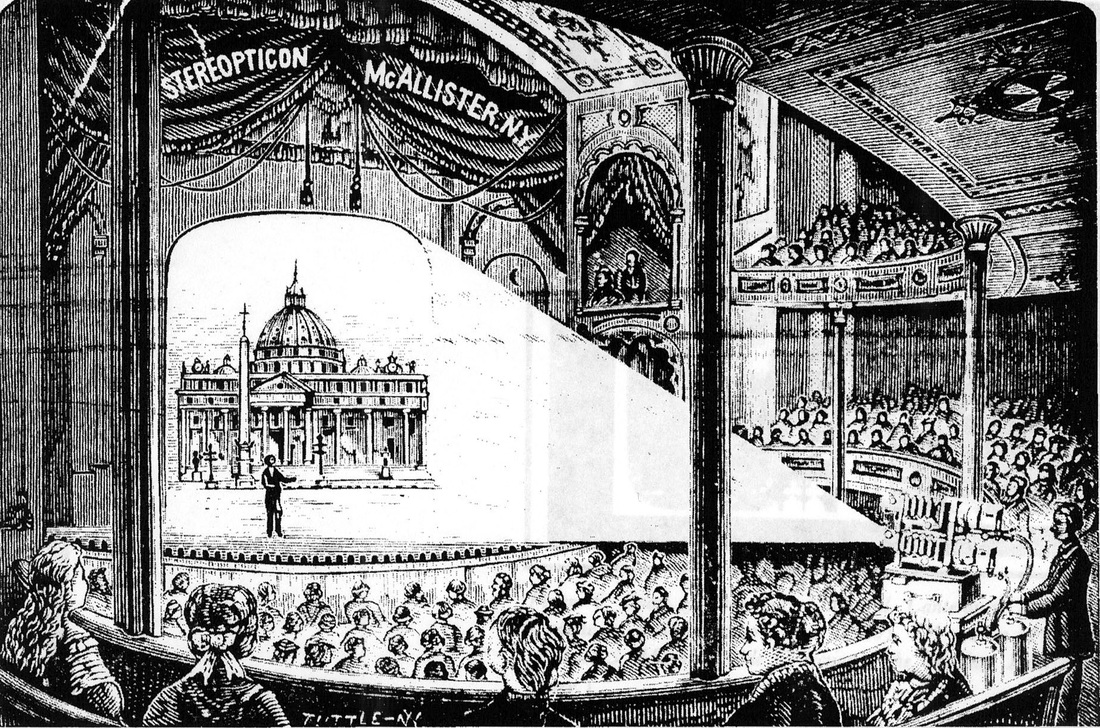
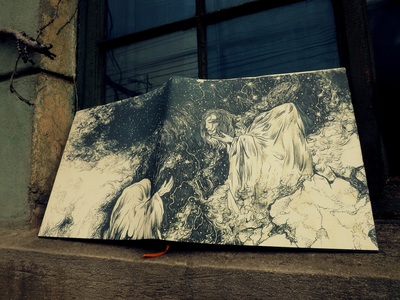
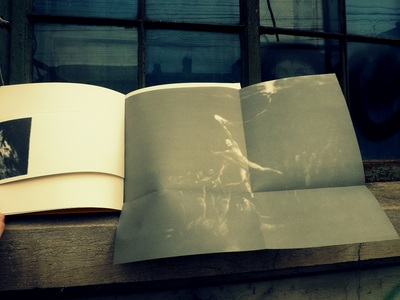
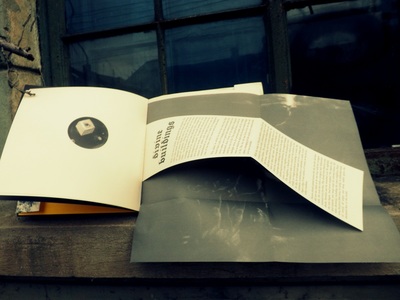
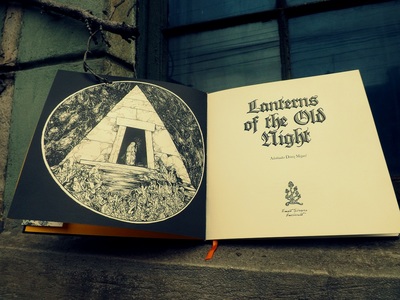
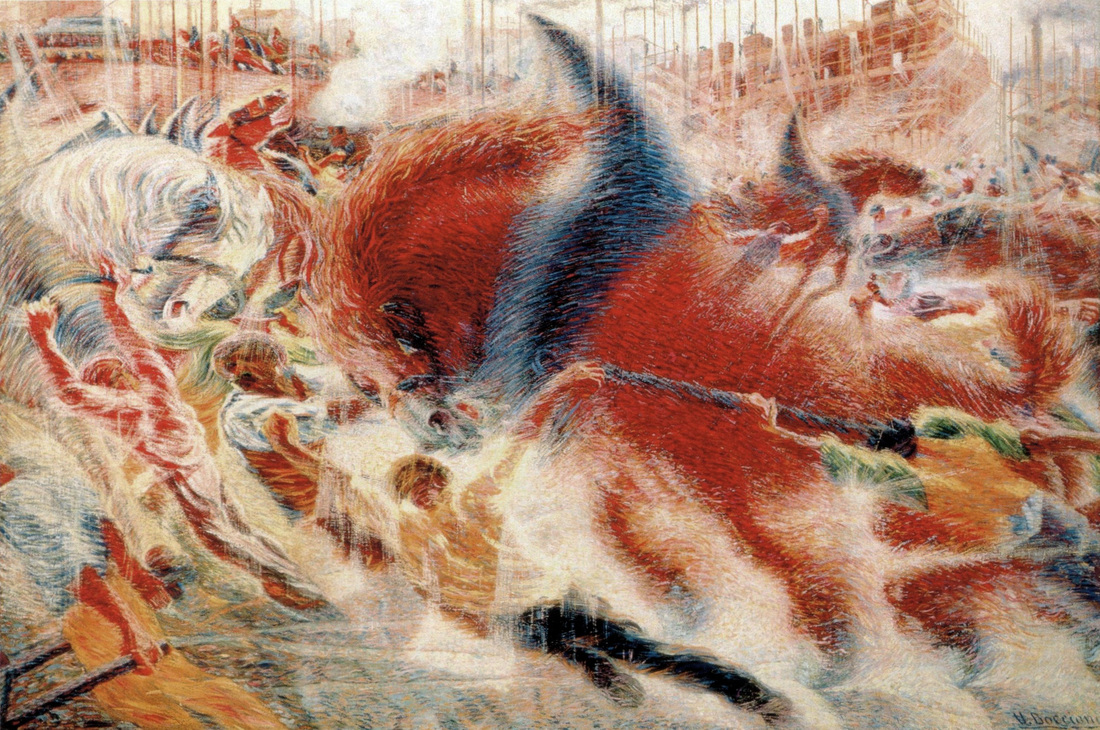
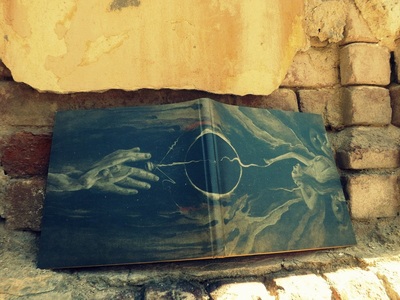
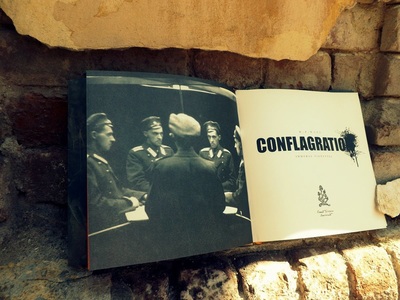
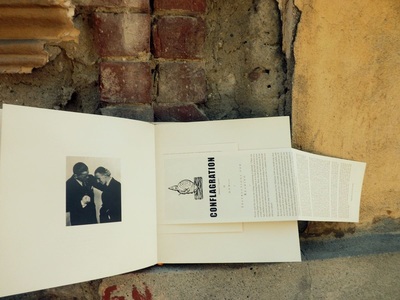
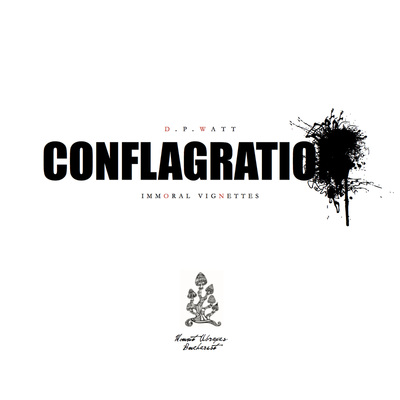
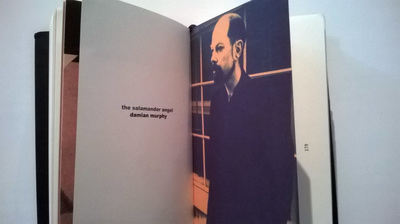
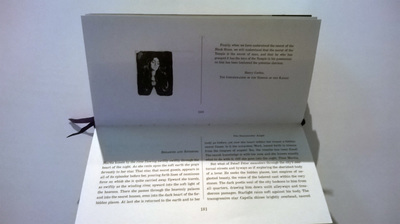
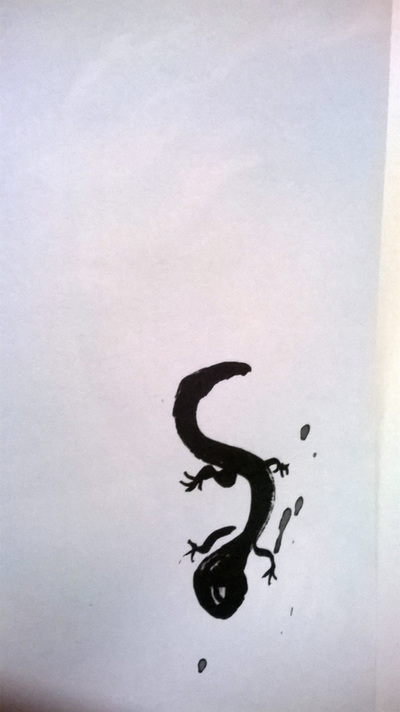
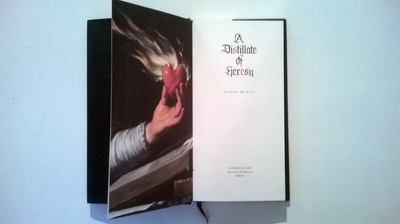
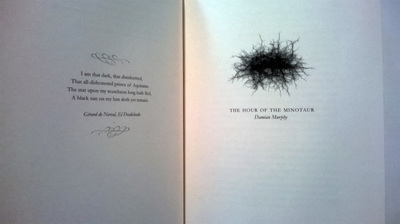
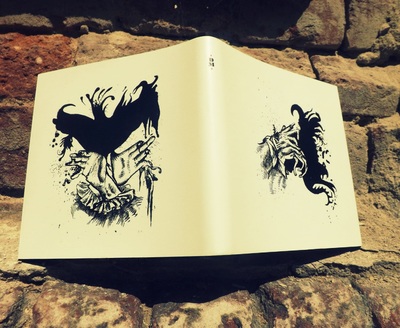
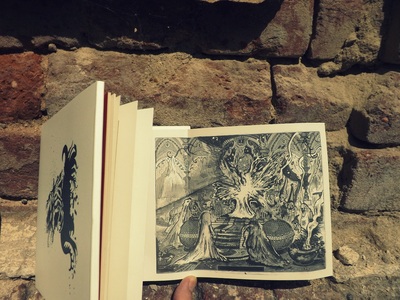
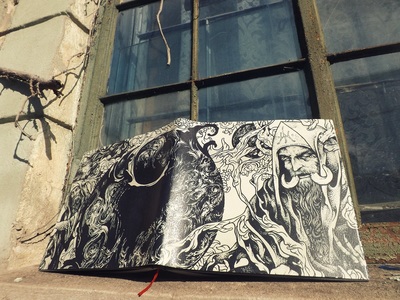
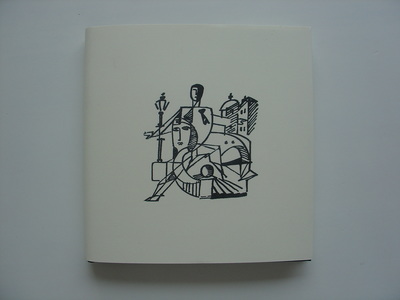
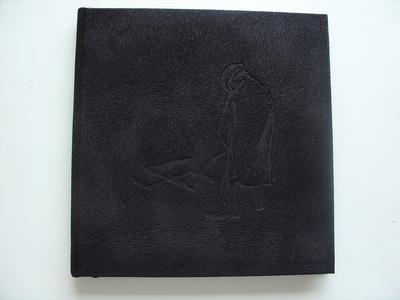
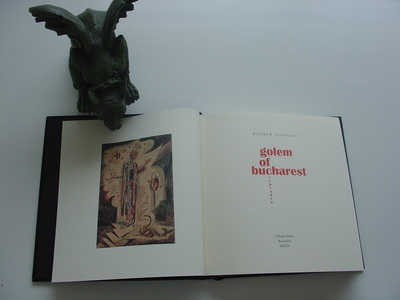
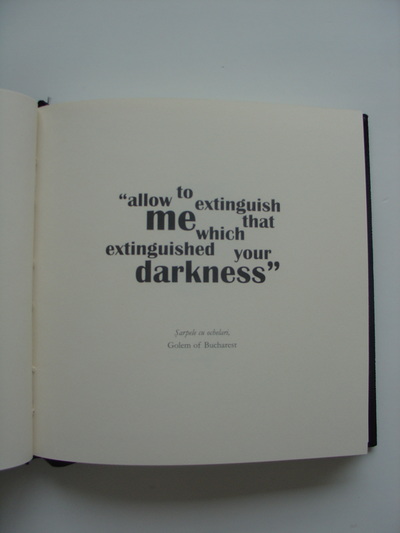
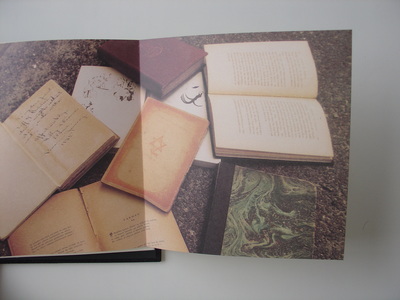
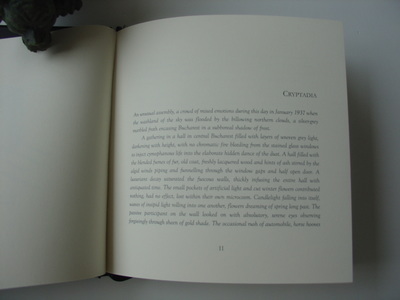
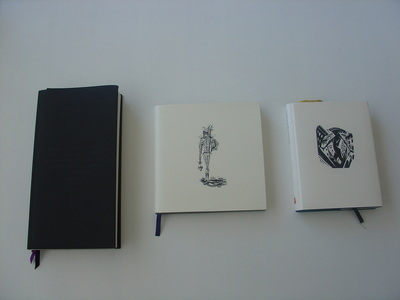
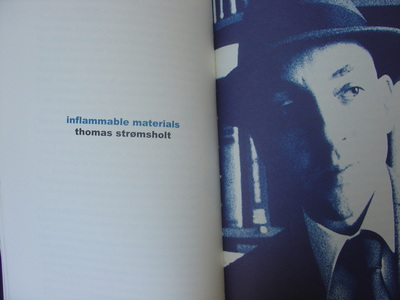
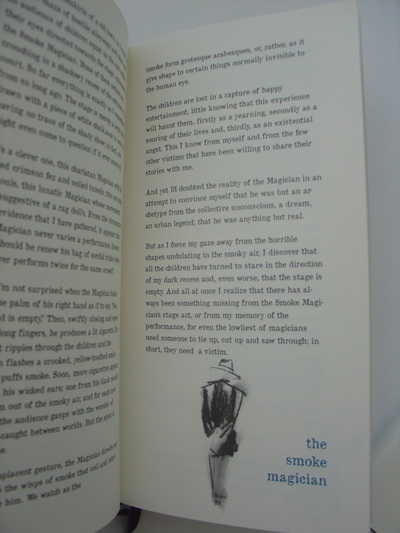
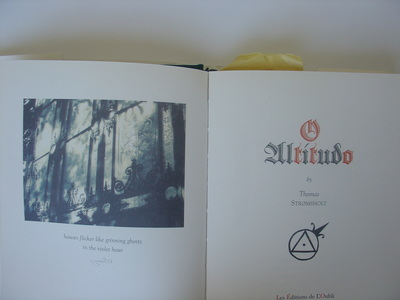
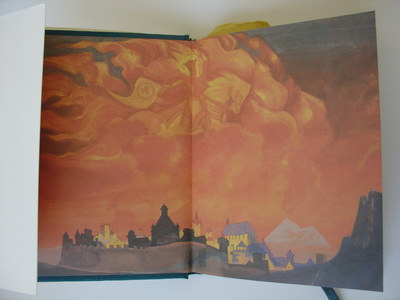
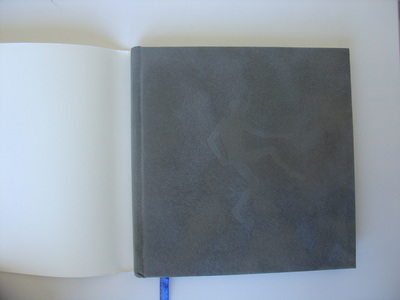
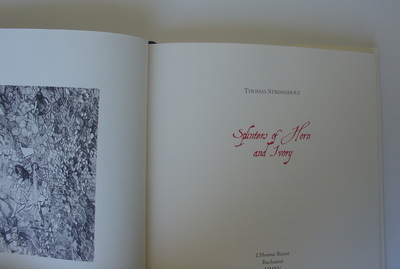
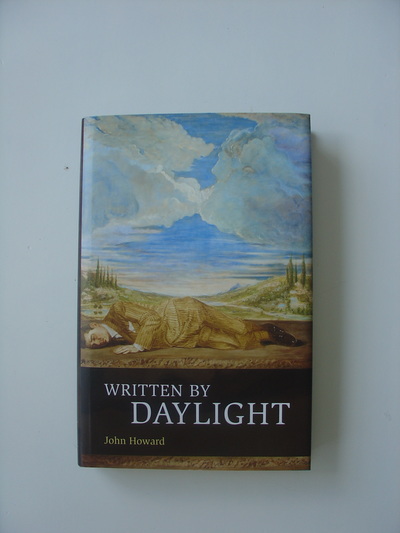
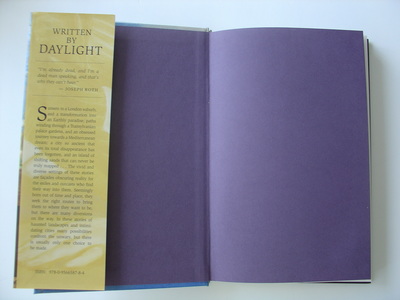
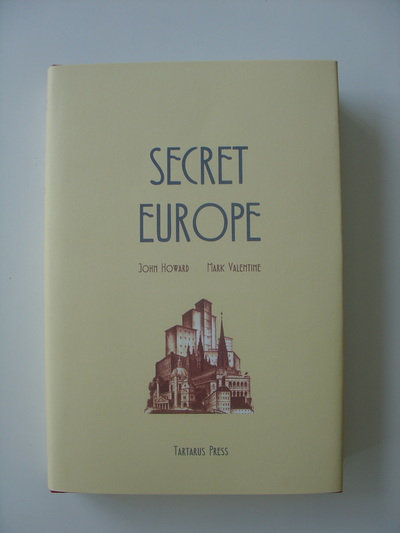
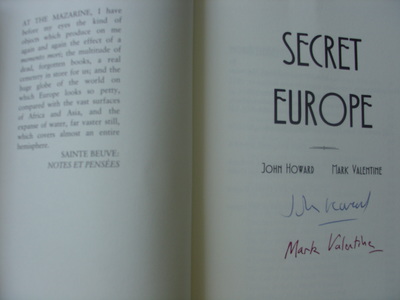
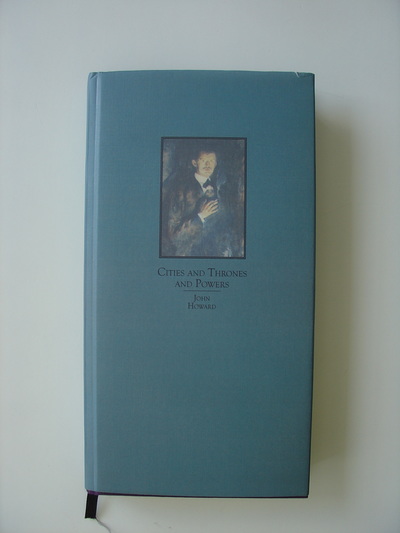
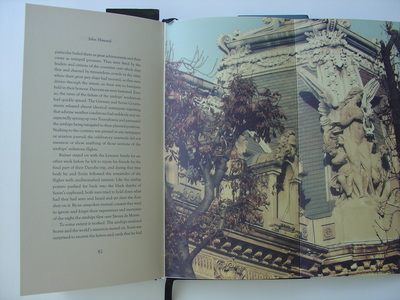
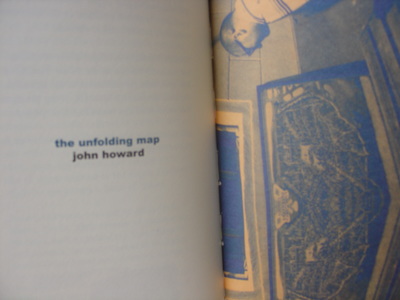
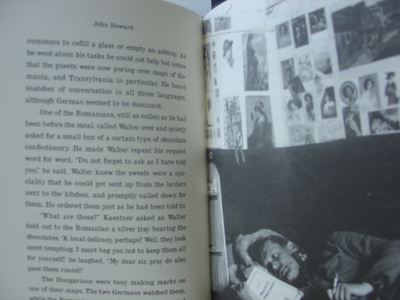
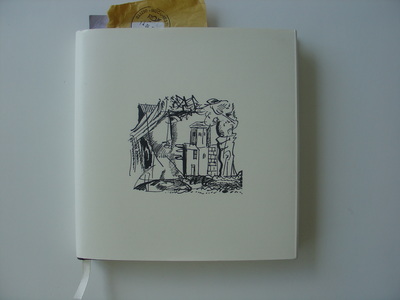
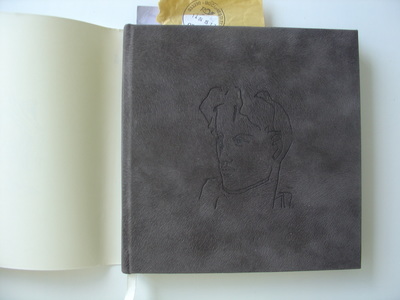
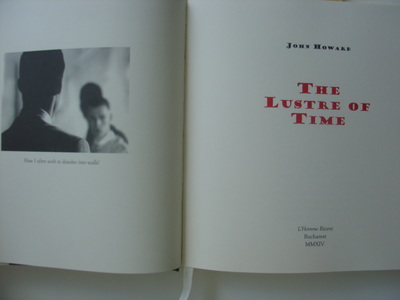
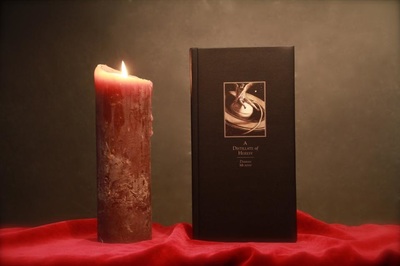

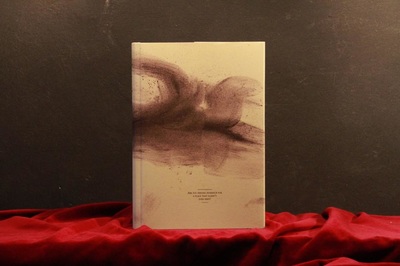
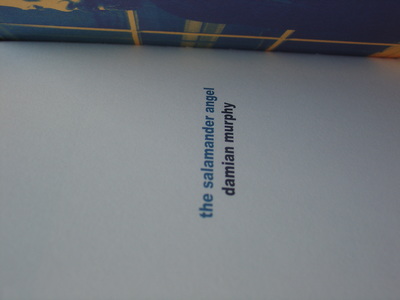
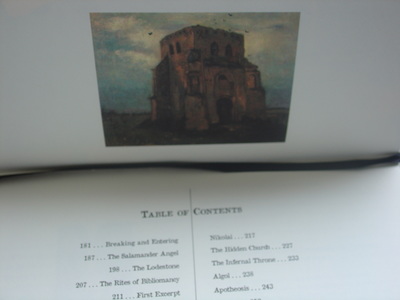
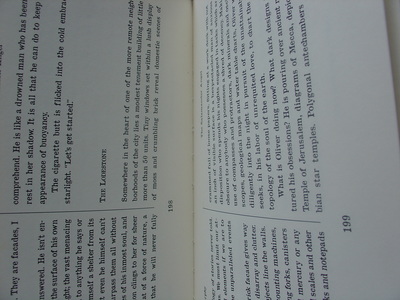
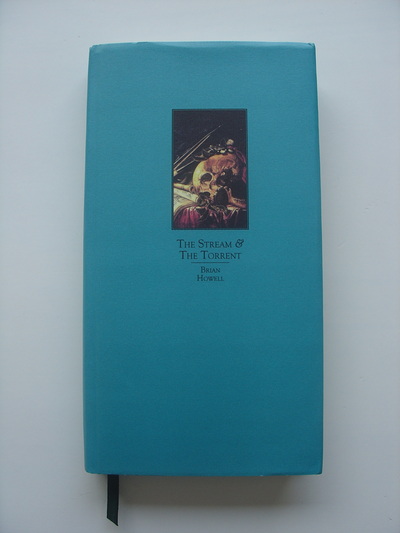
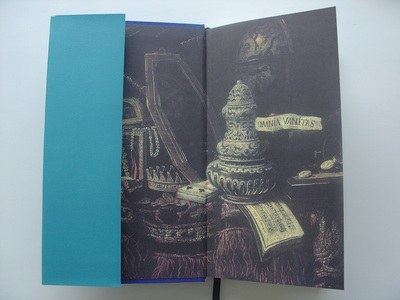
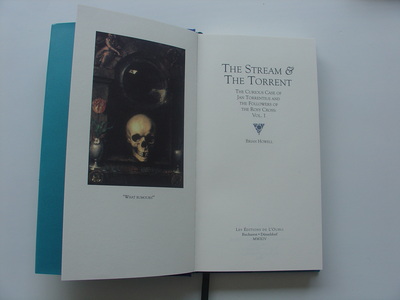
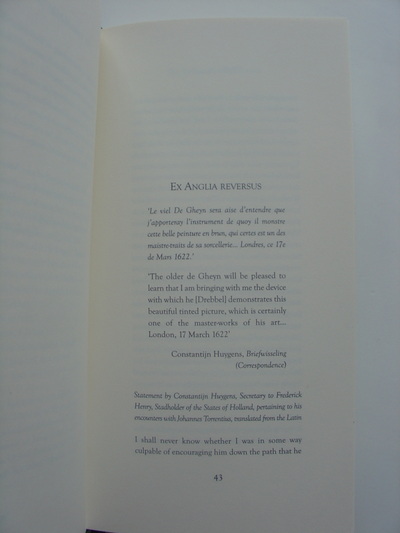
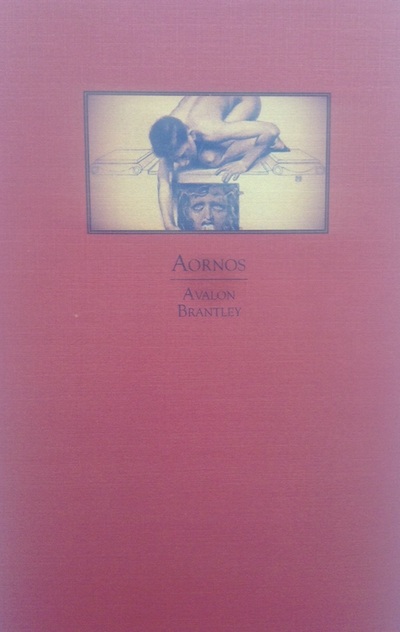
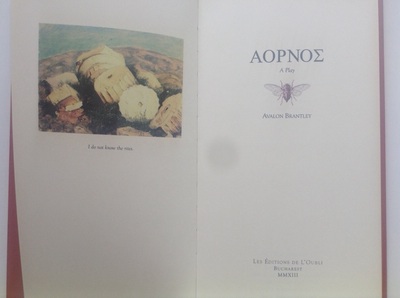
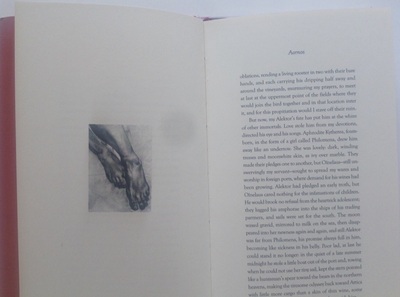
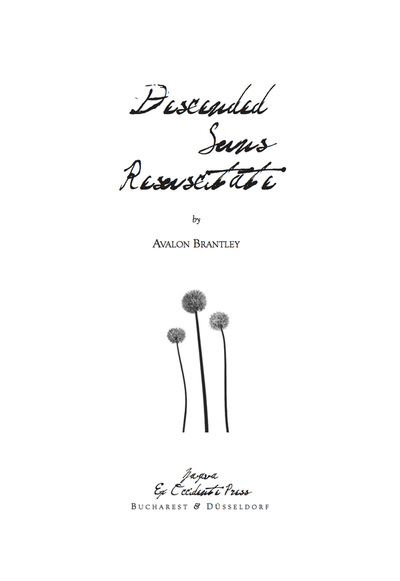
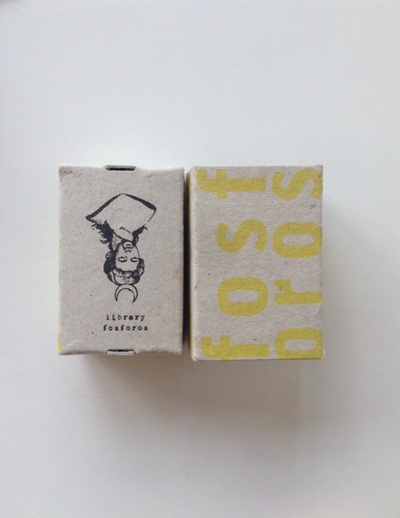
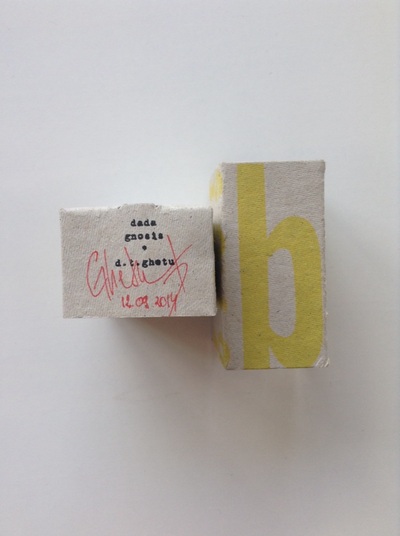
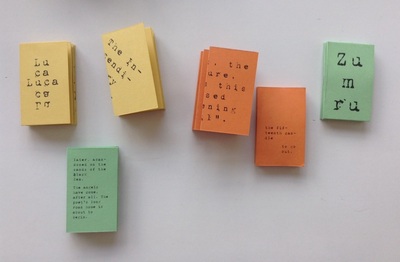
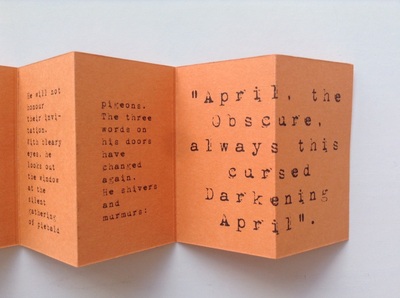
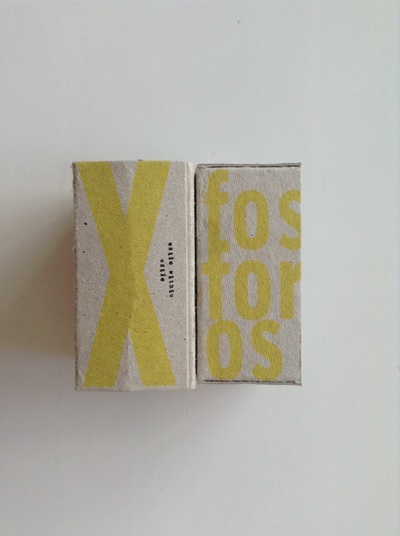
 RSS Feed
RSS Feed
